Create a Clipboard Icon
In the following tutorial you will learn how to create a clipboard icon in Graphic for Mac.
For starters you will learn how to setup a simple grid and how to create the main shapes using the Rounded Rectangle Tool. Using an image fill, a bunch of effects and some basic blending techniques you will learn how to create the wooden board with all its shading and highlights. Using mostly simple shapes, basic vector shape building techniques and the Effects pane you will learn how to create the remaining pieces of your icon.
Step 1
Go to File > New (Command + N) to bring up the New Document window. Select the Grid document style, set the document units to pixels, and set the document dimensions to 600 pixels wide by 600 pixels high.
Next, we'll set up the document grid. Switch to the Grid pane in the Properties panel. If the Properties panel is not currently visible, you can easily open it using the ruler icon that lies above the Layers panel. Change the grid X Spacing and Y Spacing to 5, set the Subdivisions to 0 and enable Snap to Grid (Command + Shift + ').
Keep in mind that you can quickly enable or disable the grid and the Snap to Grid feature using the Command + ' and Command + Shift + ' keyboard shortcuts.
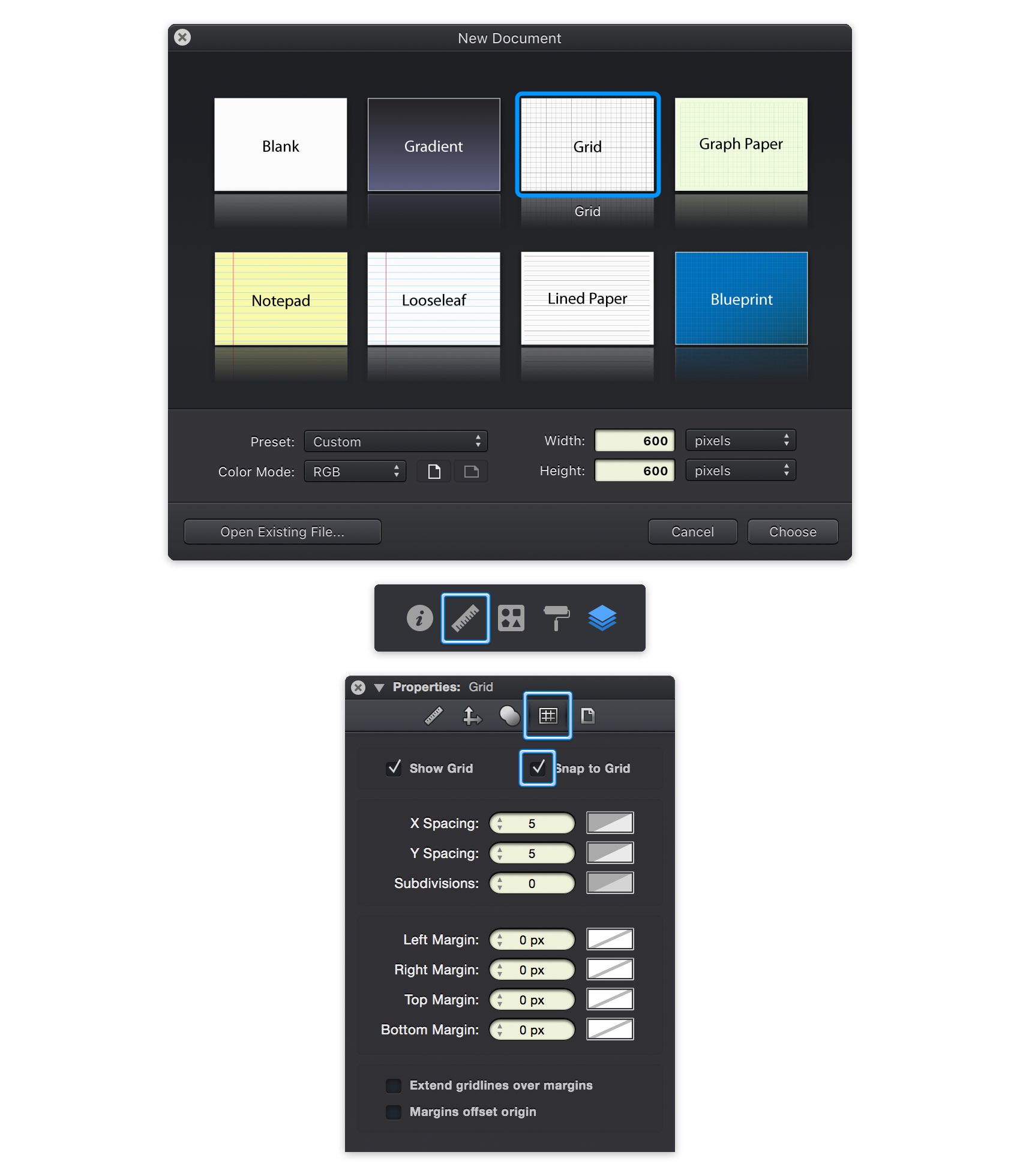
Step 2
Focus on the Toolbar and notice that by default the Fill color is set to white while the Stroke color is set to black. Click the Fill color well and set it to R=215 G=205 B=175 and then click on the Stroke color well. Drag the Alpha slider to 0% and this should make your stroke invisible.
Pick the Rounded Rectangle Tool (M), focus on the Tool Options bar and drag that Corner Radius slider to 10 pt. Move to your canvas and create a 180 x 245 px shape - the grid and the Snap to Grid feature will ease your work.

Step 3
Now, you need to download this free image. Make sure that your shape is still selected, focus on the Effects pane from the Appearance panel and add a second Fill using the plus button located in the bottom, left corner of your panel. If the Appearance panel is not currently visible, you can easily open it using the leftmost icon that lies above the Layers panel.
Select your new Fill, select Image from the Type drop-down menu and add the image downloaded a few moments ago. Go to the Blend drop-down menu and select Multiply and then drag that Scale slider to around 140%. In the end your rounded rectangle should look like in the following image.
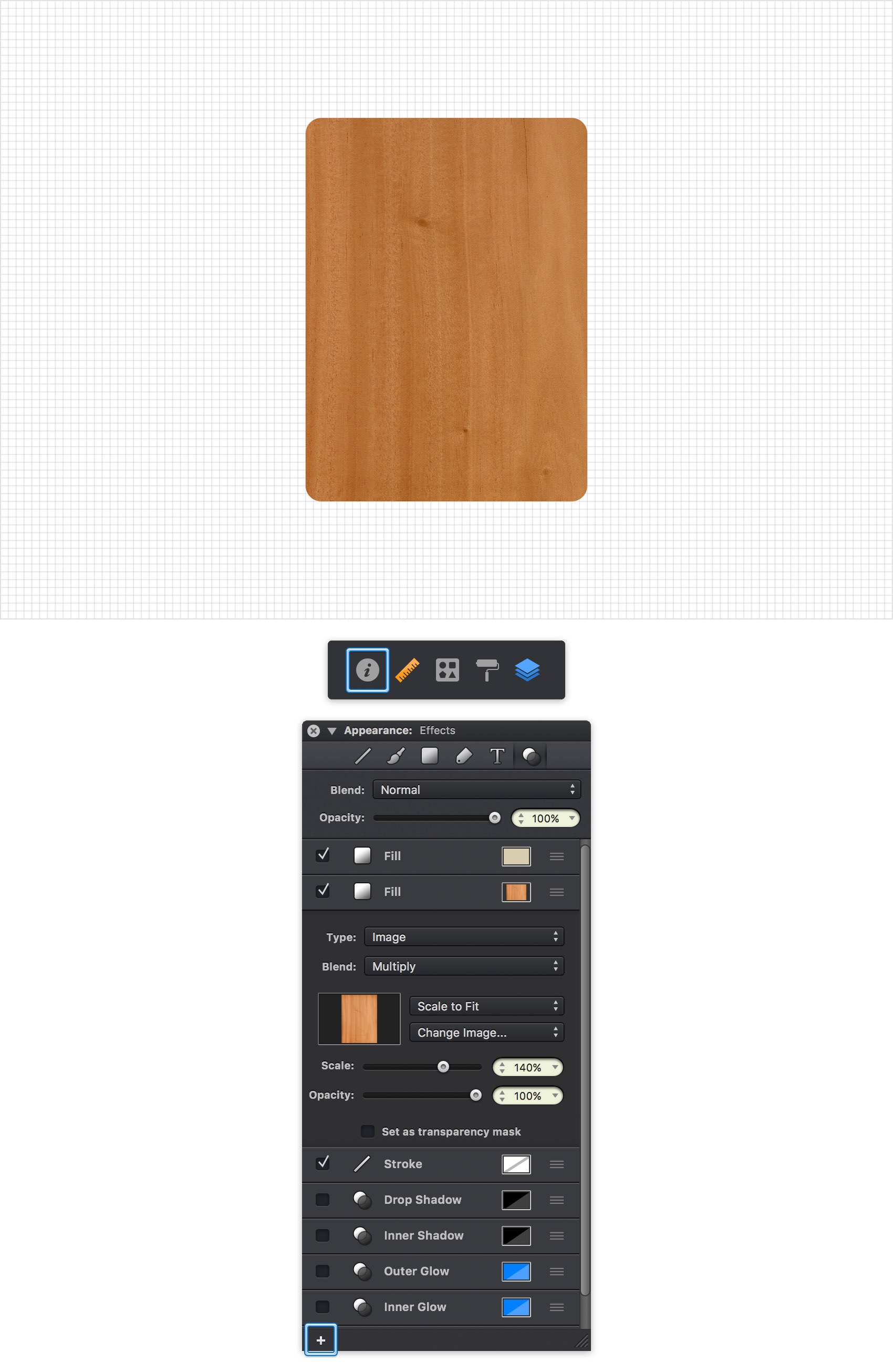
Step 4
Make sure that your rounded rectangle stays selected, keep focusing on the Effects pane from the Appearance panel and select the existing Stroke. Drag the Width slider to 1 pt, select Inside from the Position drop-down menu and Soft Light from the Blend drop-down menu and then click the color well that stands for your Stroke. Drag the Alpha slider to 40% and make sure that the color is set to black (R=0 G=0 B=0).
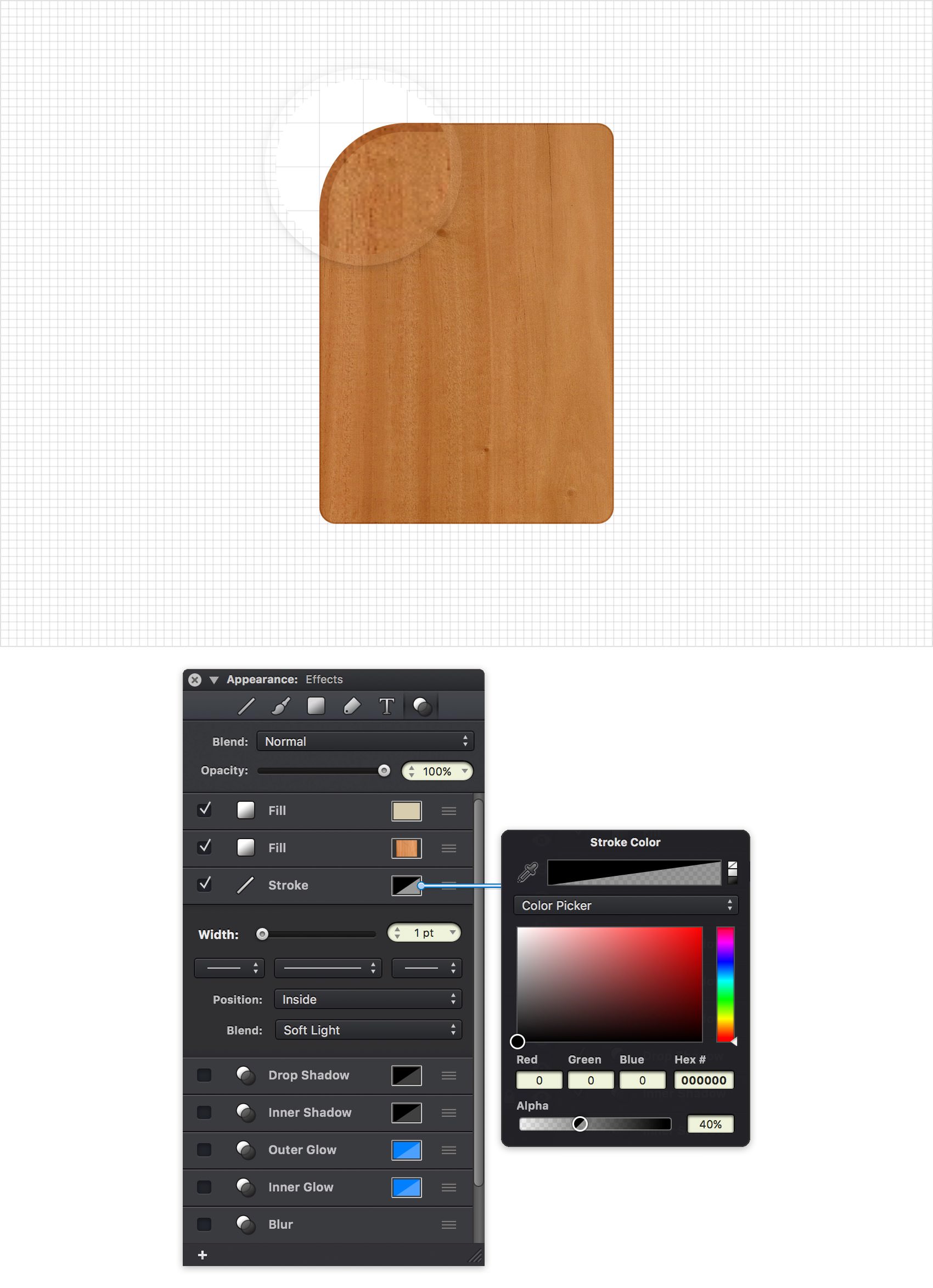
Step 5
Make sure that your rounded rectangle is still selected, keep focusing on the Effects pane and add a second Stroke using that same plus button. Select this new Stroke and enter the attributes shown in the following image.
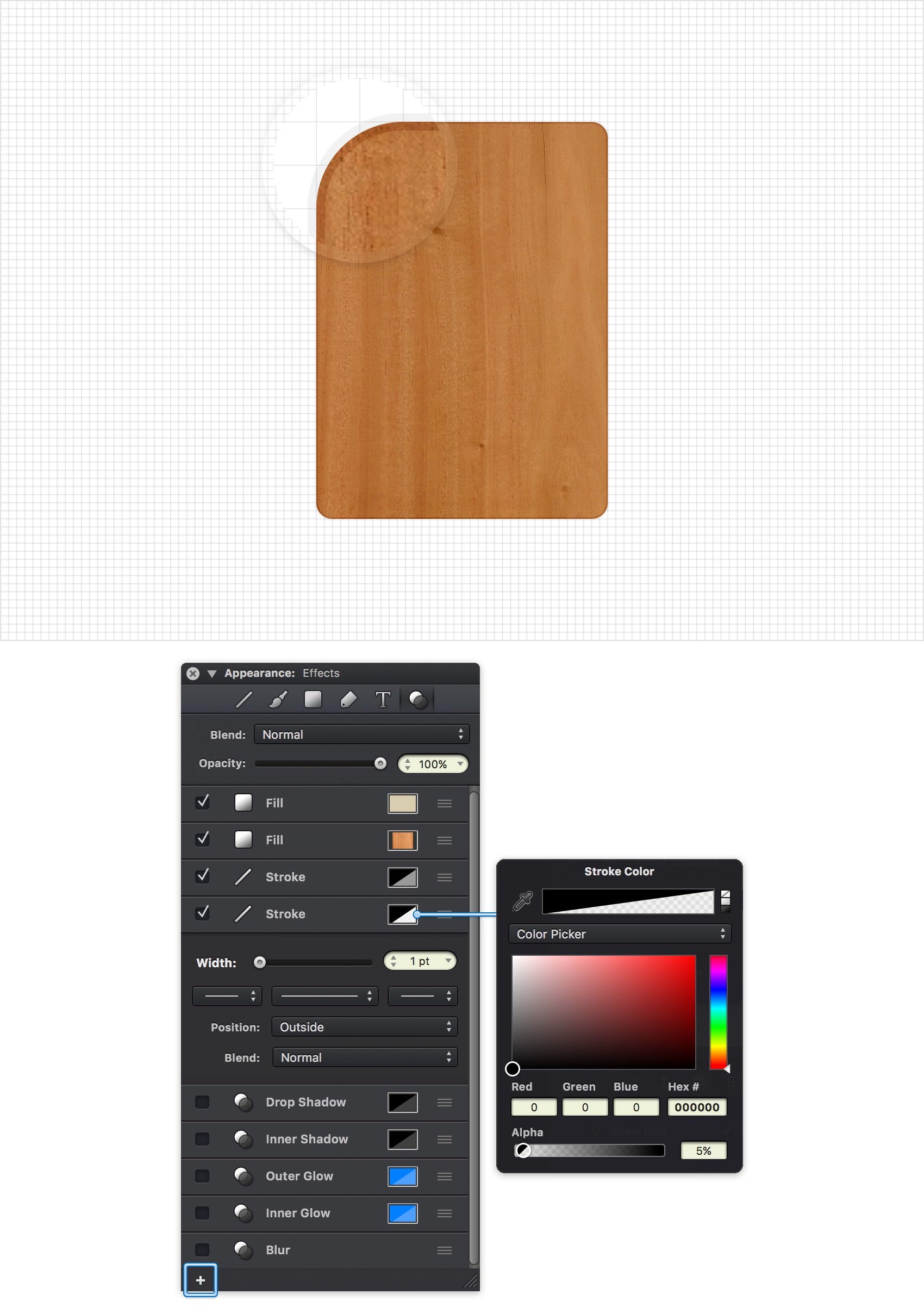
Step 6
Make sure that your rounded rectangle is still selected, keep focusing on the Effects pane and check the box that stands for the existing Drop Shadow to activate it. Drag this effect between the two Strokes, enter 1 in the Y box and 0 in the other two boxes and then click the color well that stands for this effect. Drag the Alpha slider to 100% and replace the existing color with R=124 G=60 B=4.
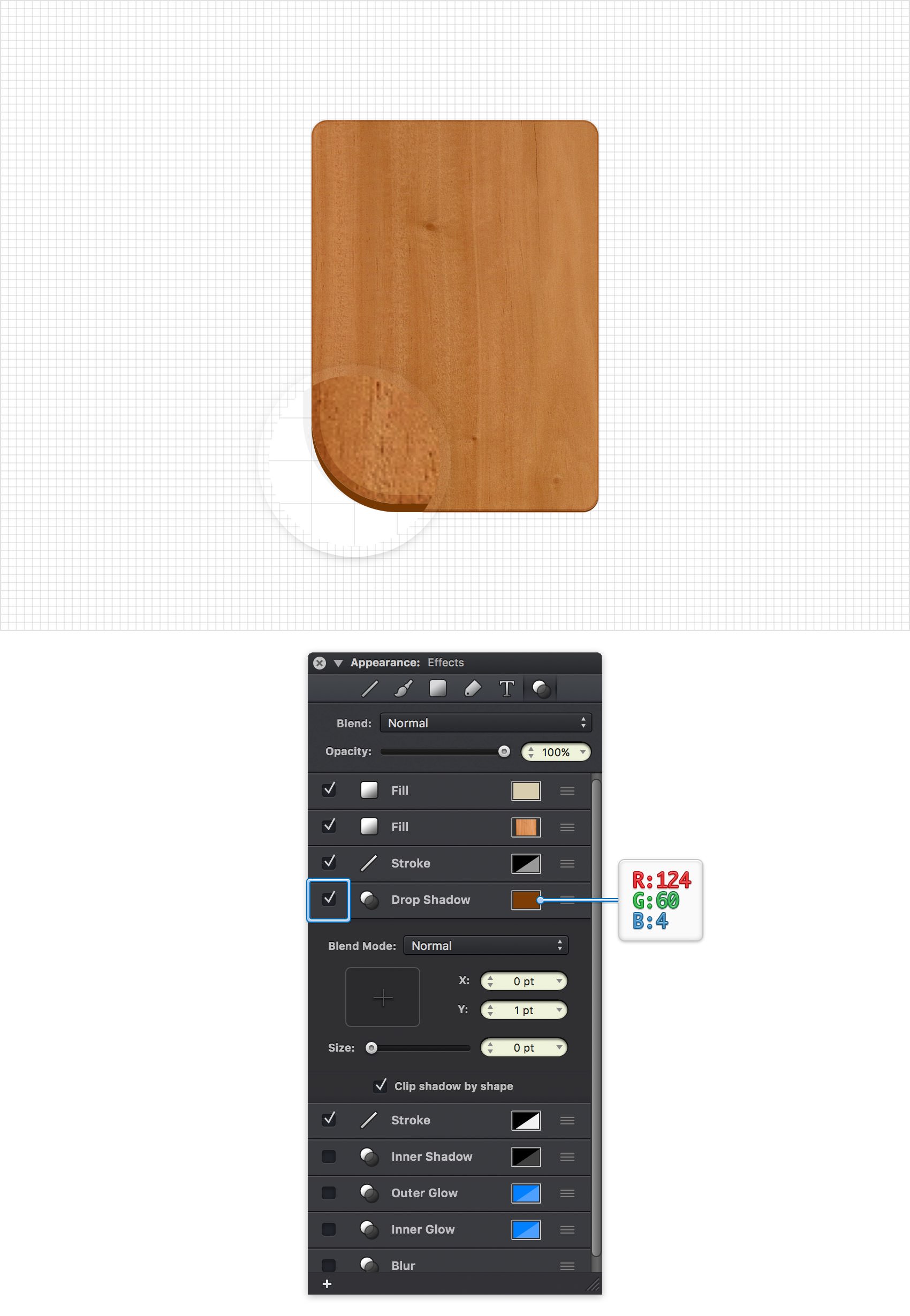
Step 7
Make sure that your rounded rectangle is still selected, keep focusing on the Effects pane and add a second Drop Shadow using that same plus button. Select this new effect, make sure that it lies below the existing Drop Shadow and then enter the attributes shown in the following image.
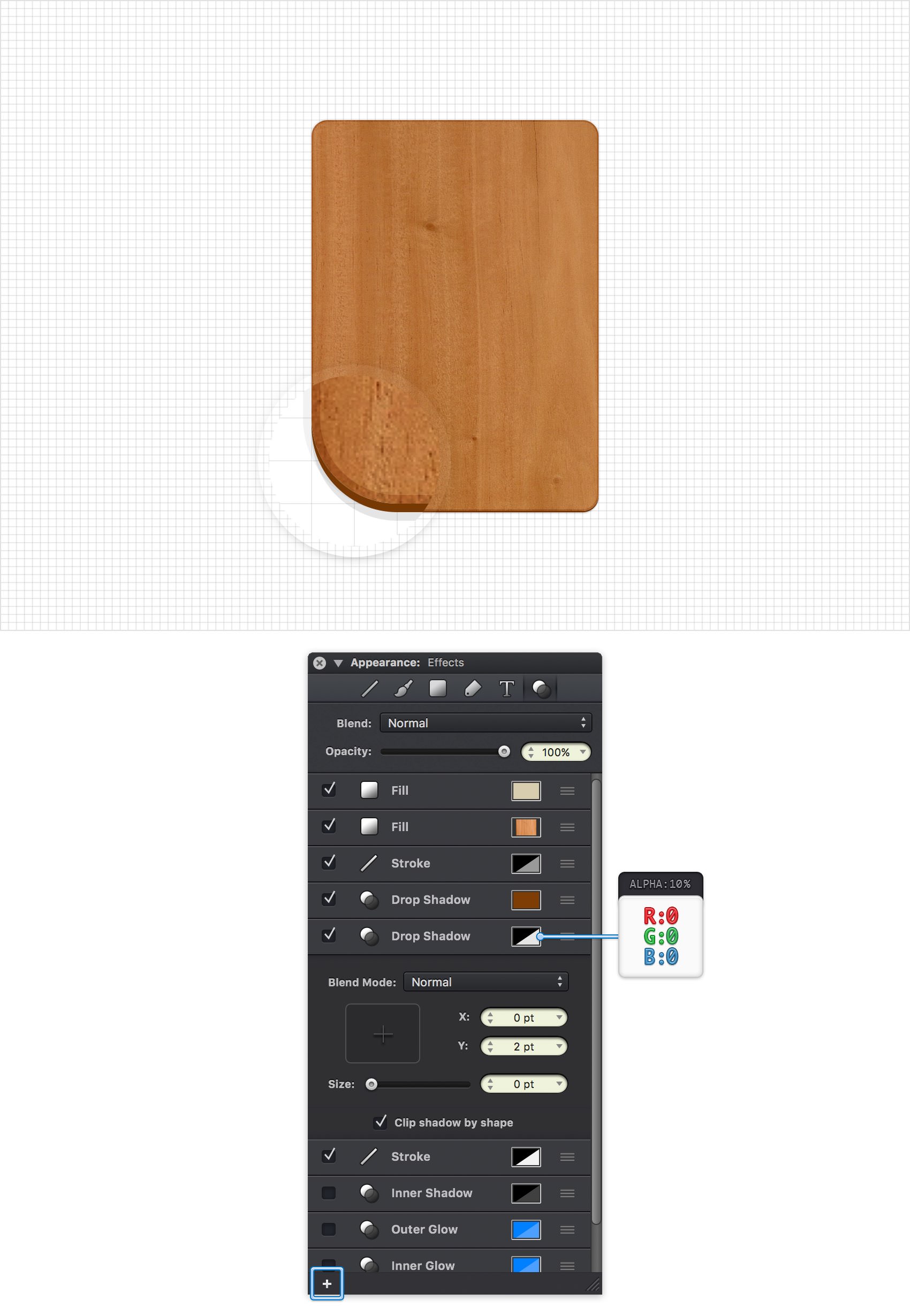
Step 8
Make sure that your rounded rectangle is still selected, keep focusing on the Effects pane, right click on the bottom Drop Shadow and go to Duplicate. Select the newly added Drop Shadow and replace the existing attributes with the ones shown in the following image.

Step 9
Make sure that your rounded rectangle is still selected, keep focusing on the Effects pane and add a fourth Drop Shadow. Select this new effect, make sure that it lies below the existing Drop Shadows and then enter the attributes shown in the following image.
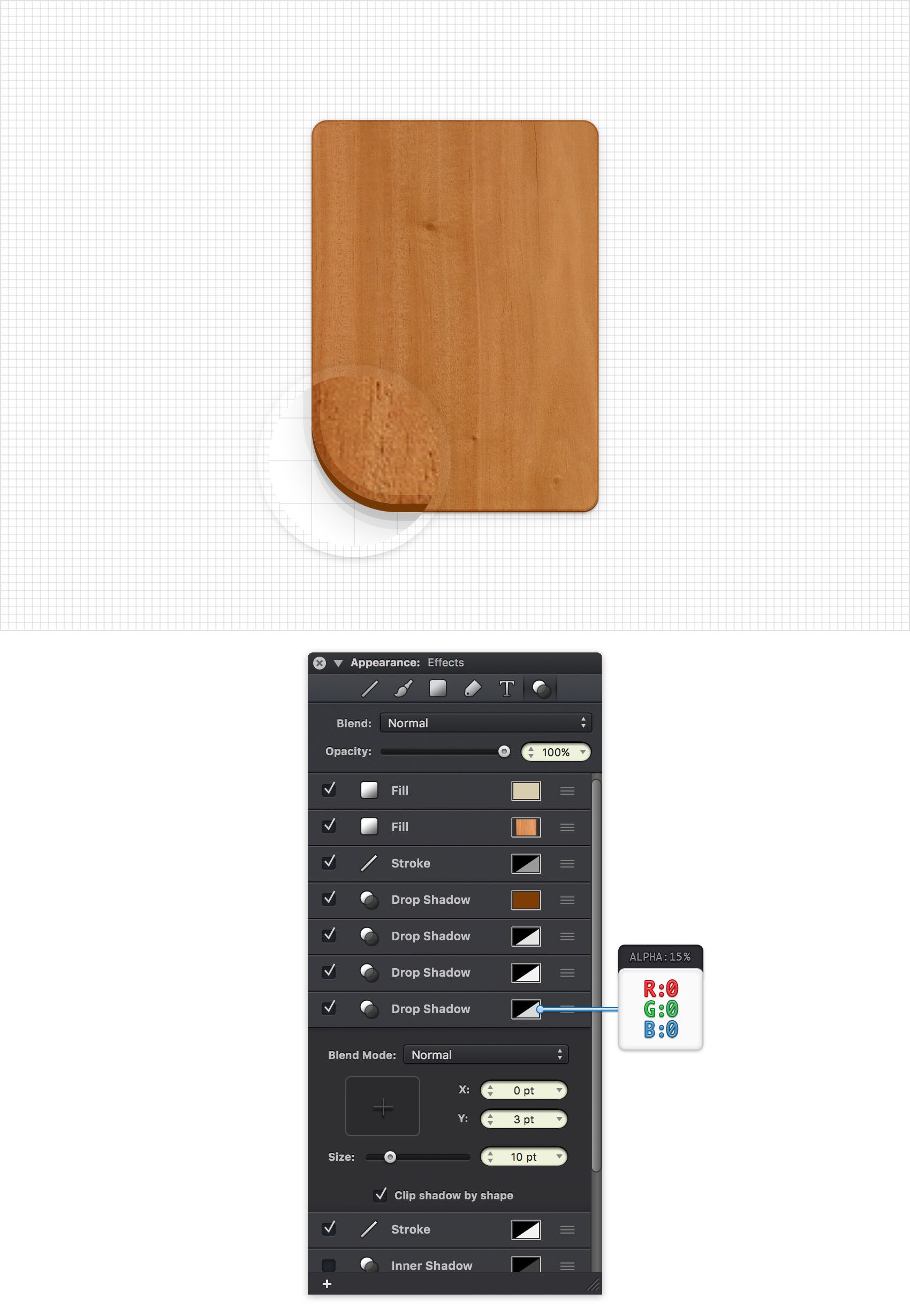
Step 10
Make sure that your rounded rectangle is still selected, keep focusing on the Effects pane and activate the existing Inner Shadow. Select this effect, drag it right above the bottom Stroke and then enter the attributes shown in the following image.
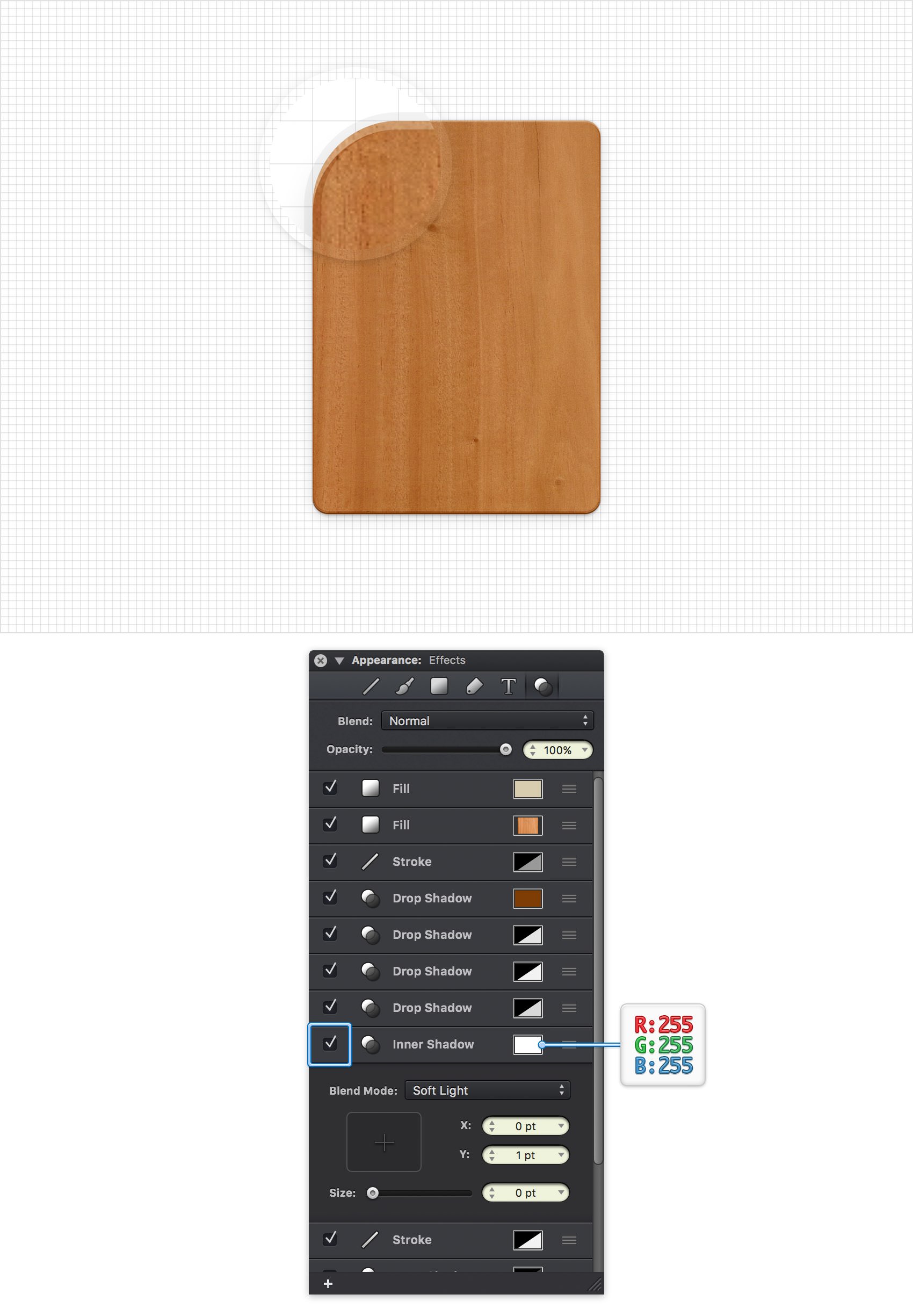
Step 11
Make sure that your rounded rectangle is still selected, keep focusing on the Effects pane and add a second Inner Shadow. Select this new effect, drag it below the existing Inner Shadow and then enter the attributes shown in the following image.
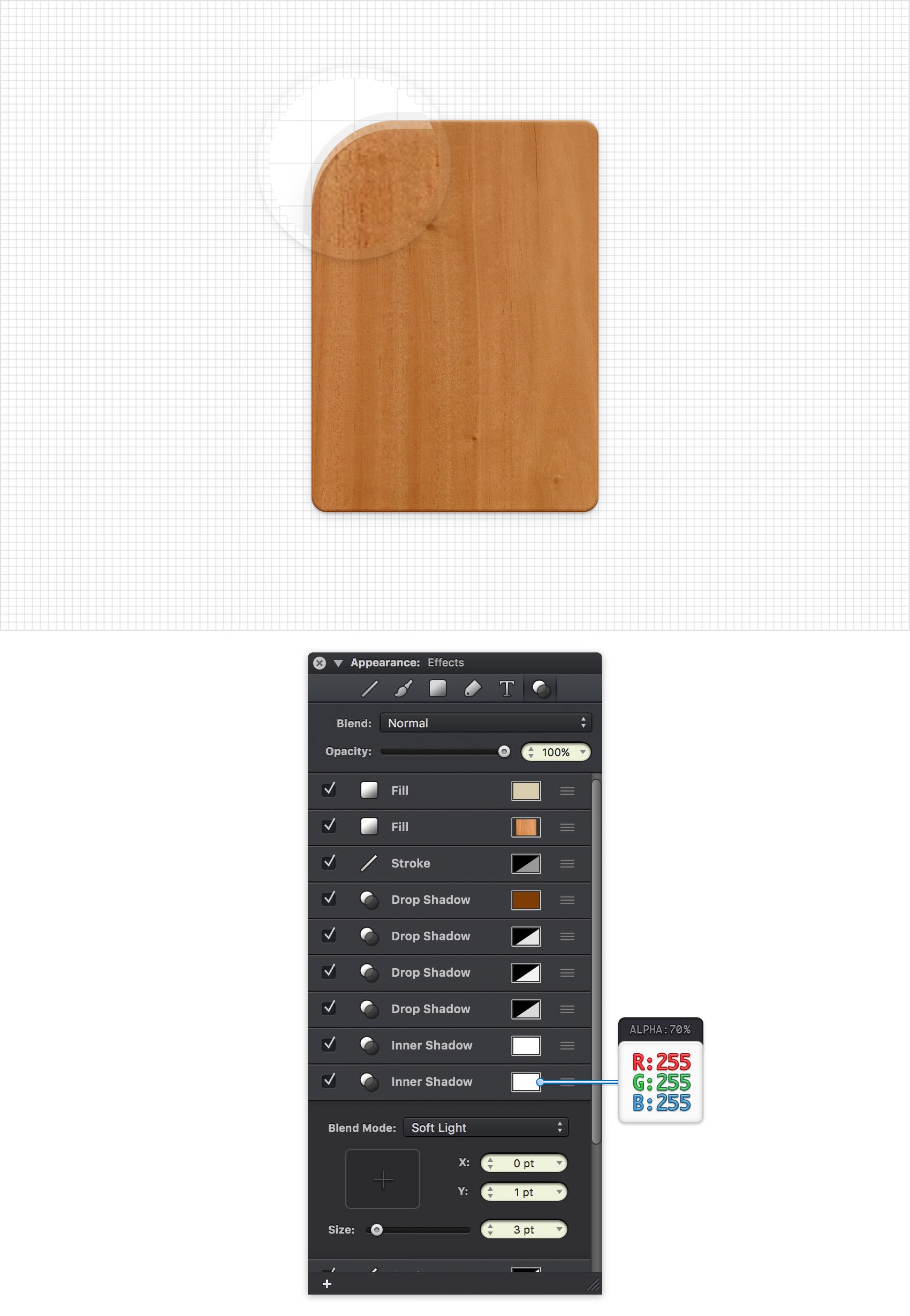
Step 12
Make sure that your rounded rectangle is still selected, keep focusing on the Effects pane and add a third Inner Shadow. Select this new effect, drag it below the existing Inner Shadows and then enter the attributes shown in the following image.

Step 13
Make sure that your rounded rectangle is still selected, keep focusing on the Effects pane and activate the existing Inner Glow. Select this effect, drag it right below the top Stroke and then enter the attributes shown in the following image.
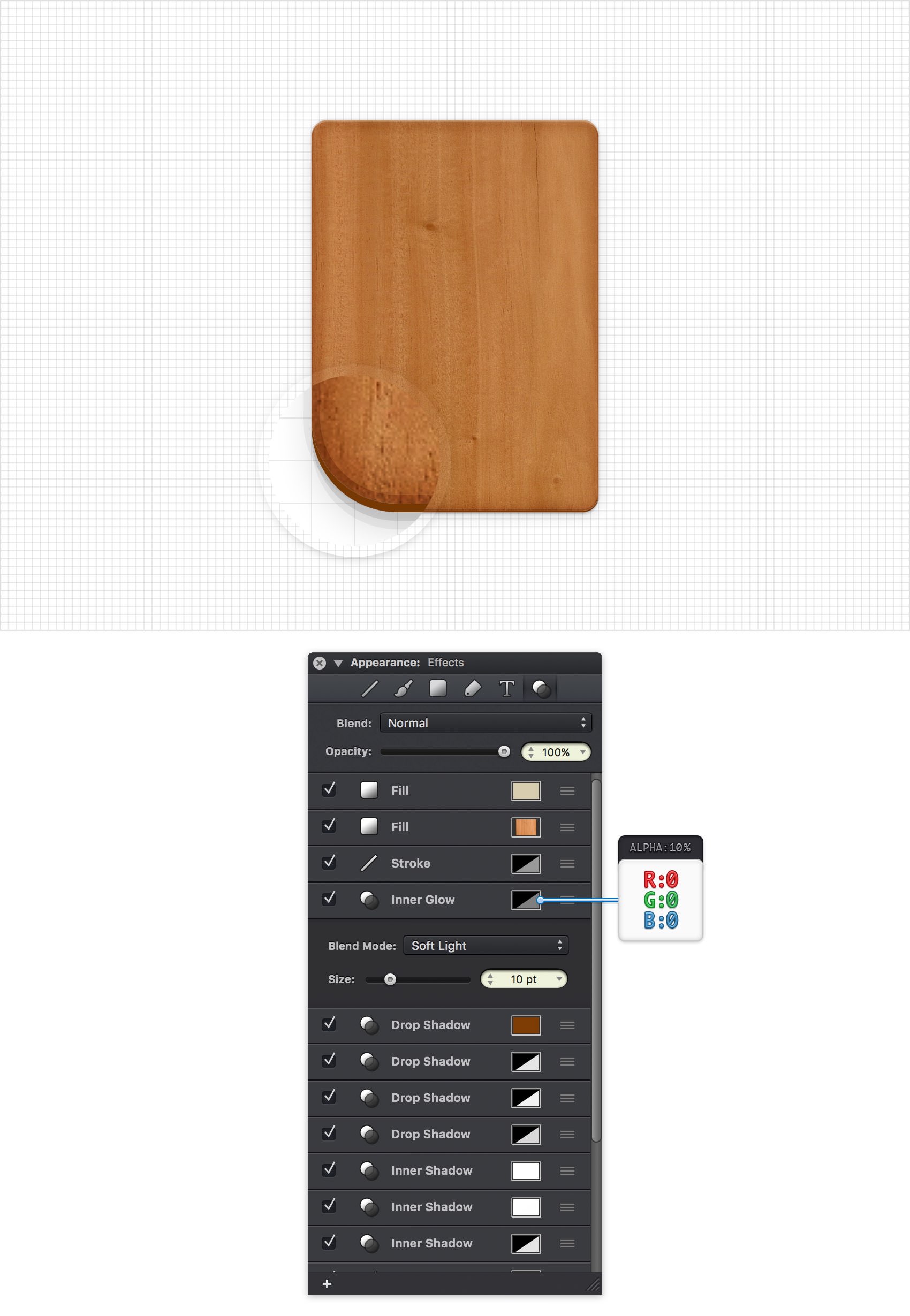
Step 14
Return to your Toolbar, make sure that the Stroke is invisible and then set the Fill color to black (R=0 G=0 B=0).
Pick the Rounded Rectangle Tool (Shift + M), focus on the Tool Options bar and drag that Corner Radius slider to 8 pt. Move to your canvas, create a 170 x 225 px shape and place it as shown in the following image. Using the same tool, create a 50 x 20 px shape and place it as shown in the second image.
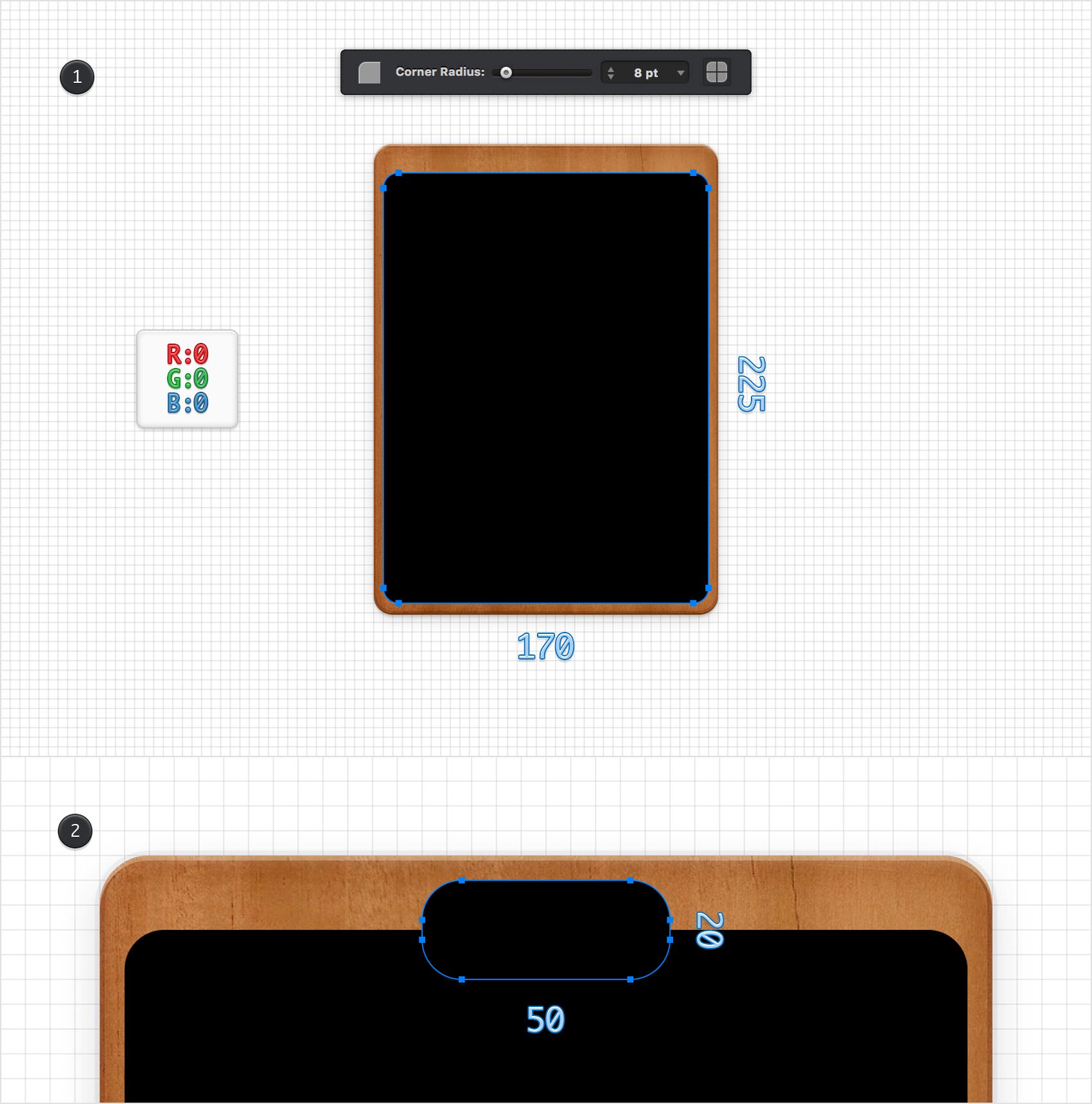
Step 15
Select the black, rounded rectangles made in the precious step, focus on the Path Tools pane from the Properties panel and click the Union button.
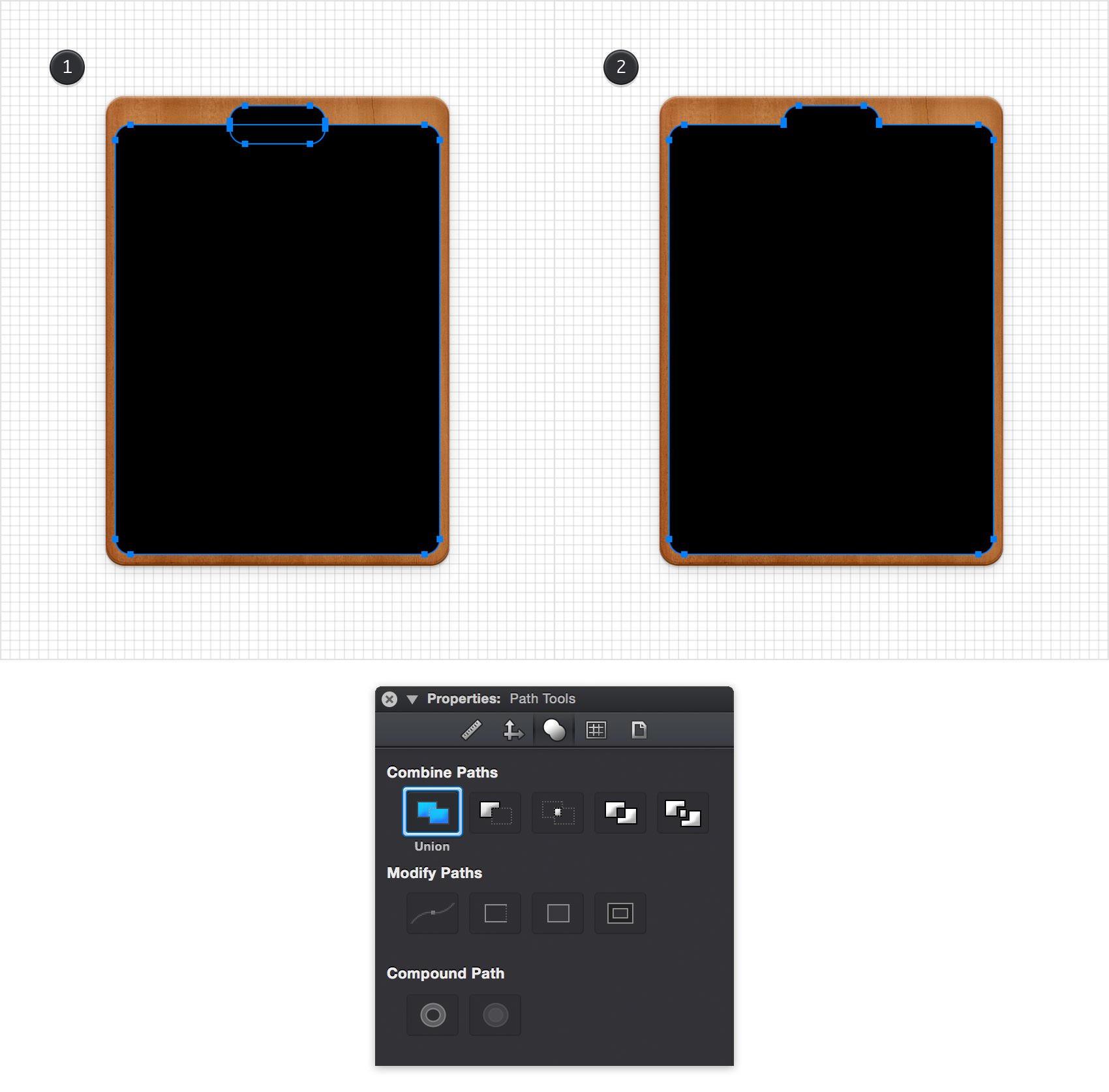
Step 16
Make sure that your black shape is still selected and focus on the Effects pane. Select the existing Fill, change the Blend Mode to Soft Light and then click that color well and drag the Alpha slider slider to 60%.
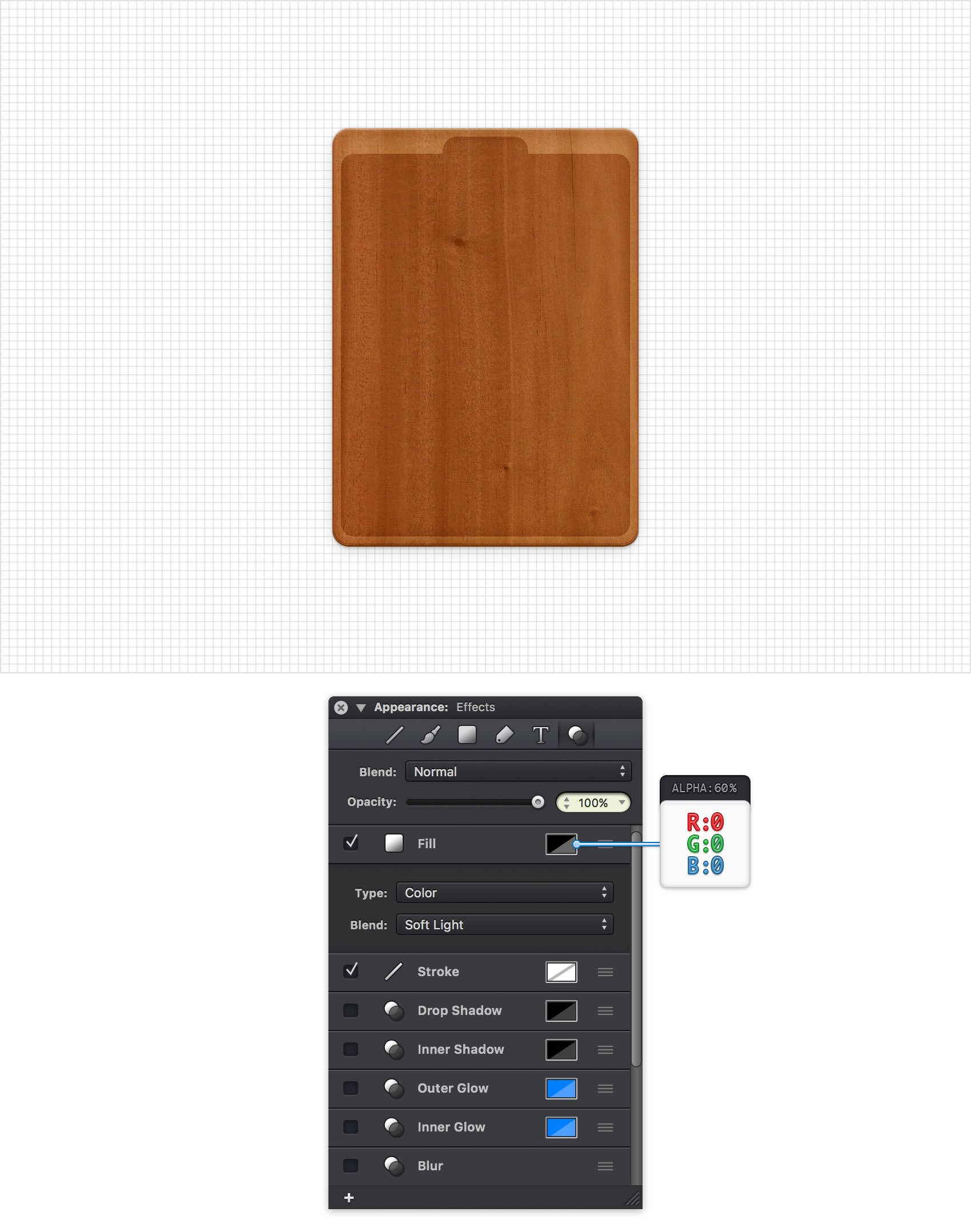
Step 17
Make sure that your black shape stays selected and keep focusing on the Effects pane. Select the existing Stroke and enter the attributes shown in the following image.

Step 18
Make sure that your black shape is still selected and keep focusing on the Effects pane. Activate the existing Drop Shadow and enter the attributes shown in the following image.
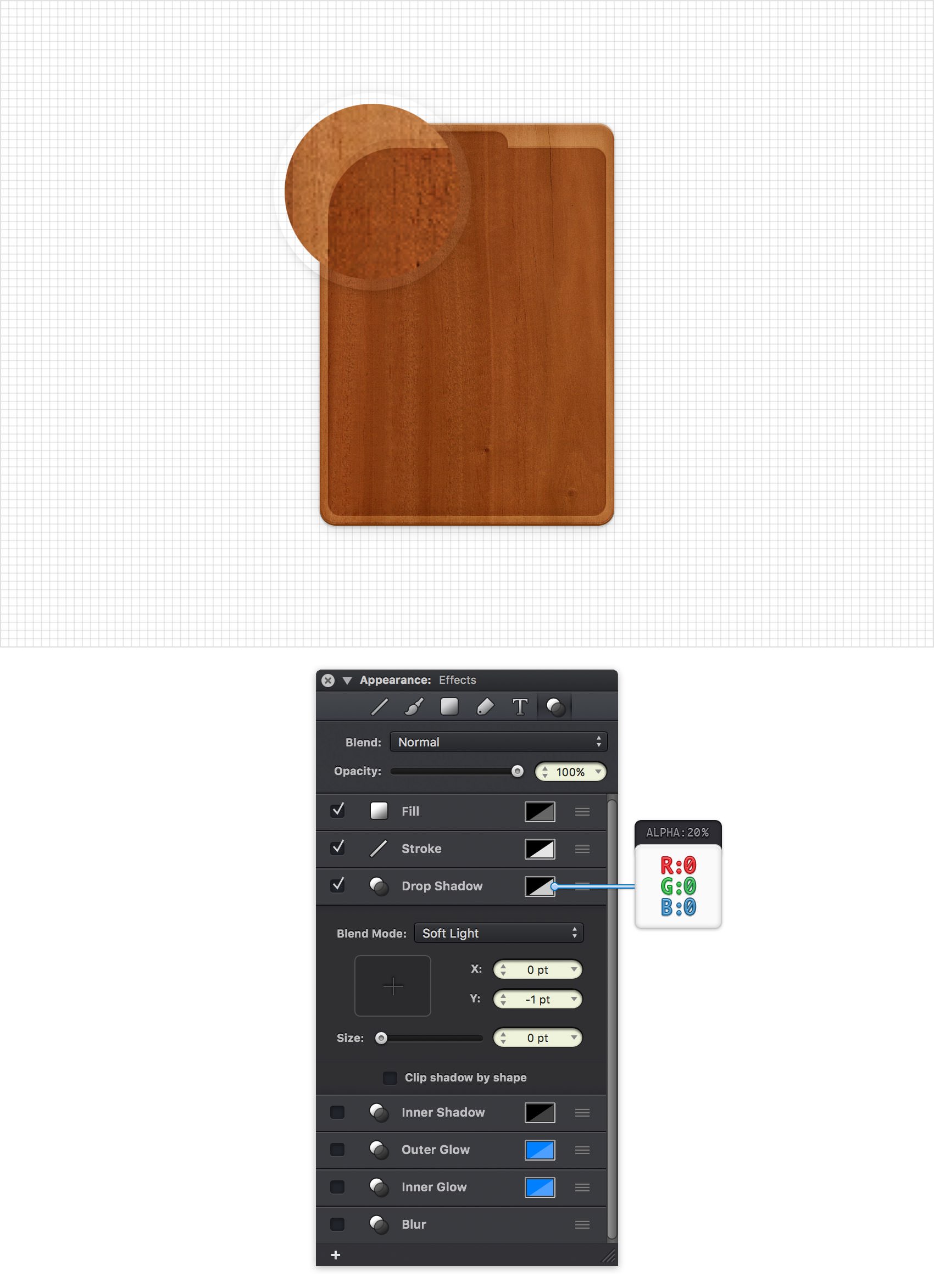
Step 19
Make sure that your black shape is still selected, keep focusing on the Effects pane and add a second Drop Shadow. Select this new effect, make sure that it lies below the existing Drop Shadow and then enter the attributes shown in the following image.
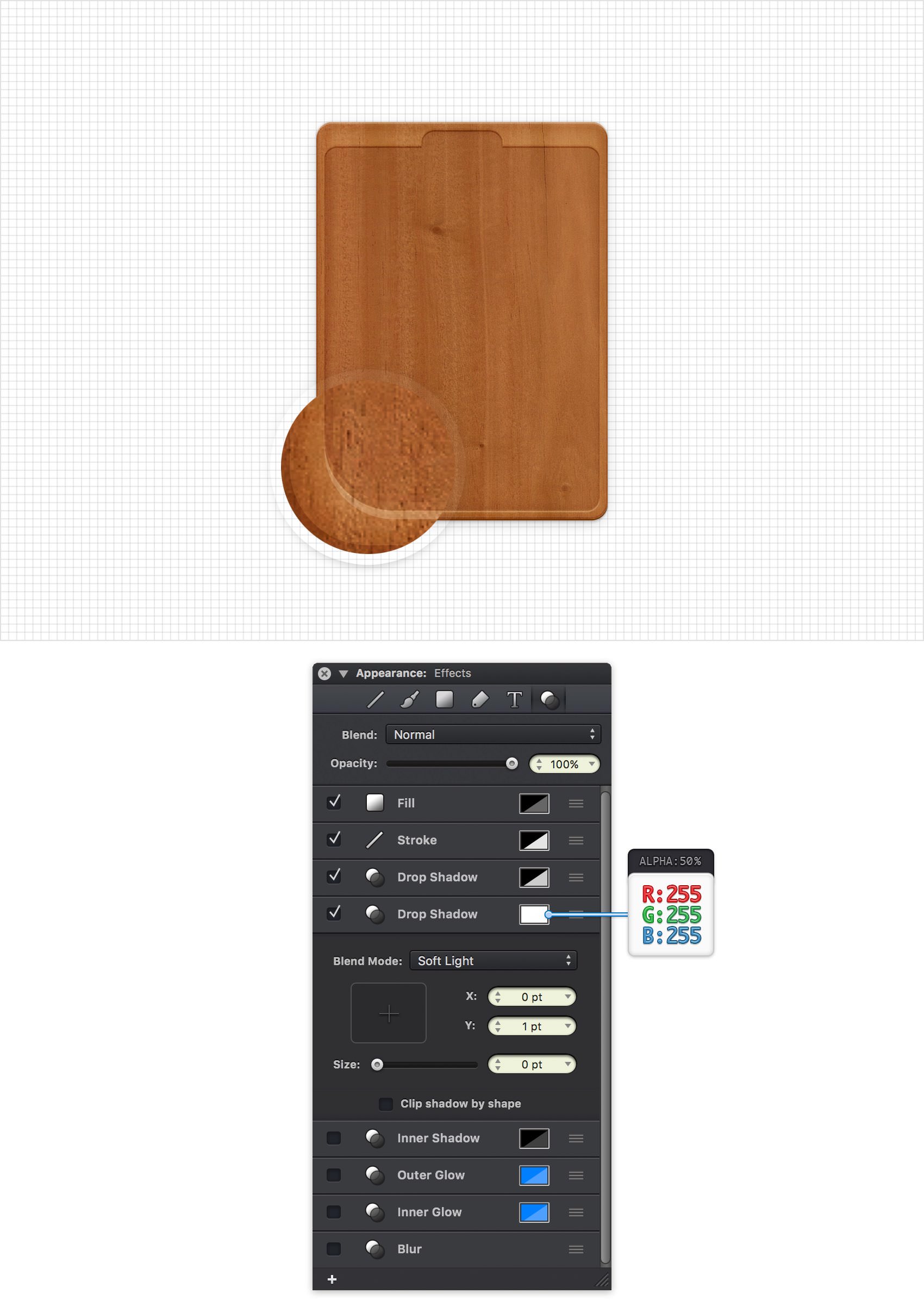
Step 20
Make sure that your black shape is still selected and keep focusing on the Effects pane. Activate the existing Inner Shadow, make sure that it lies below those Drop Shadow effects and enter the attributes shown in the following image.
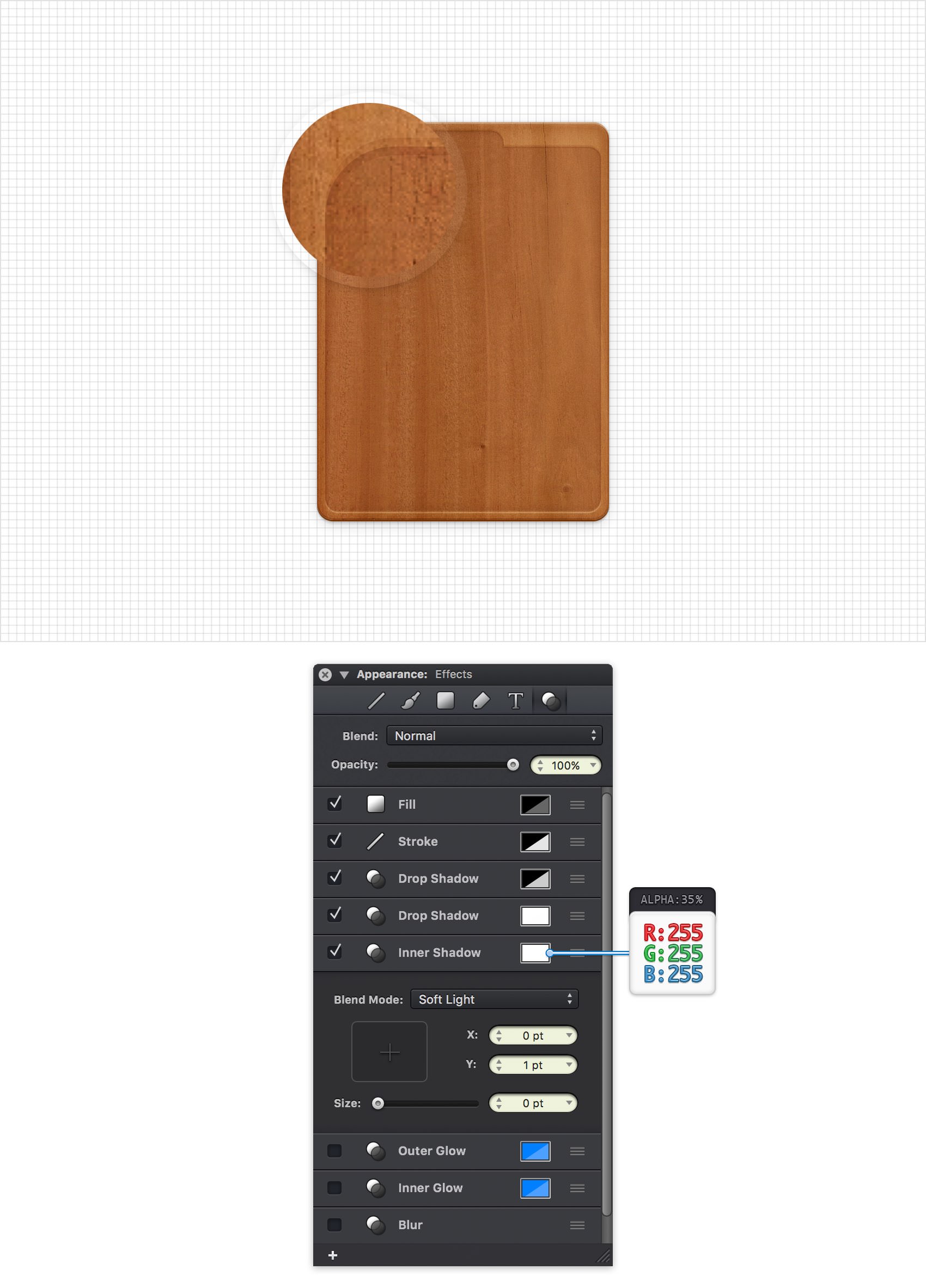
Step 21
Make sure that your black shape stays selected, keep focusing on the Effects pane and add a second Inner Shadow. Select this new effect, make sure that it lies below the existing Inner Shadow and then enter the attributes shown in the following image.
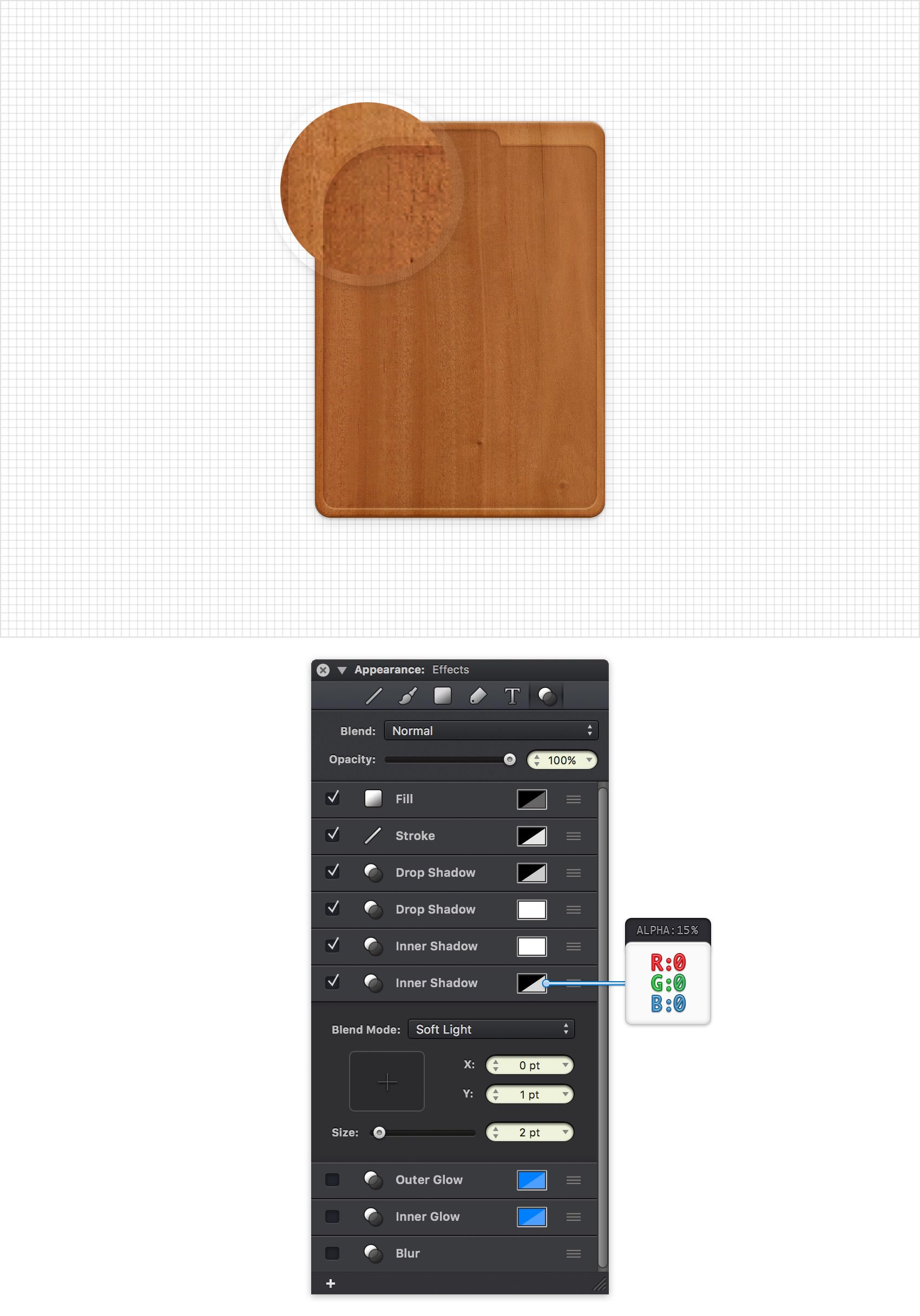
Step 22
Make sure that your black shape stays selected and keep focusing on the Effects pane. Activate the existing Inner Glow and enter the attributes shown in the following image.
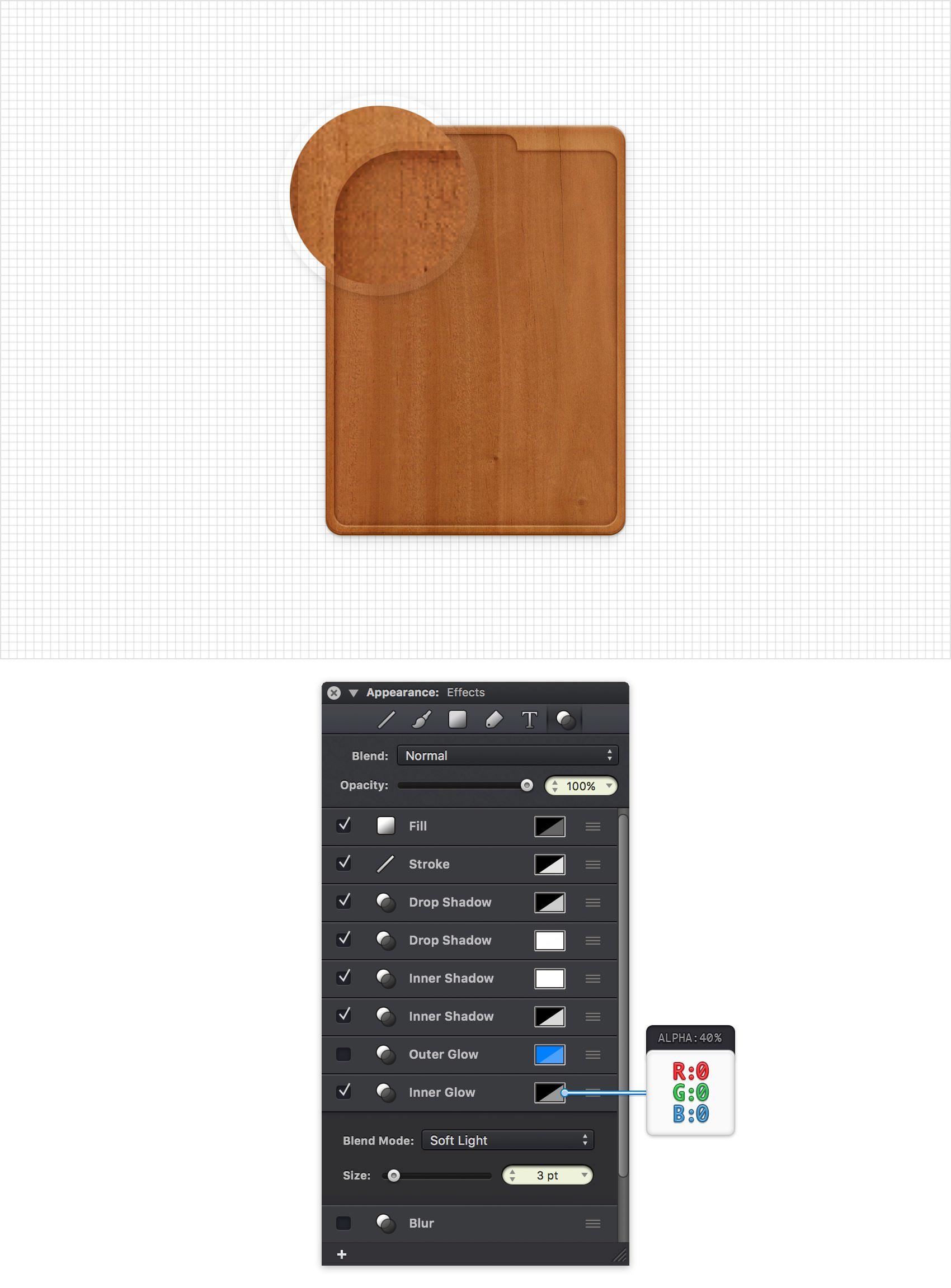
Step 23
Return to your Toolbar, make sure that the Stroke is invisible and then set the Fill color to R=252 G=252 B=252.
Pick the Rounded Rectangle Tool (Shift + M), focus on the Tool Options bar and drag that Corner Radius slider to 5 pt. Move to your canvas, create a 160 x 210 px shape and place it as shown in the following image.

Step 24
Make sure that your white, rounded rectangle stays selected and focus on the Effects pane. Select the existing Stroke and enter the attributes shown in the following image.
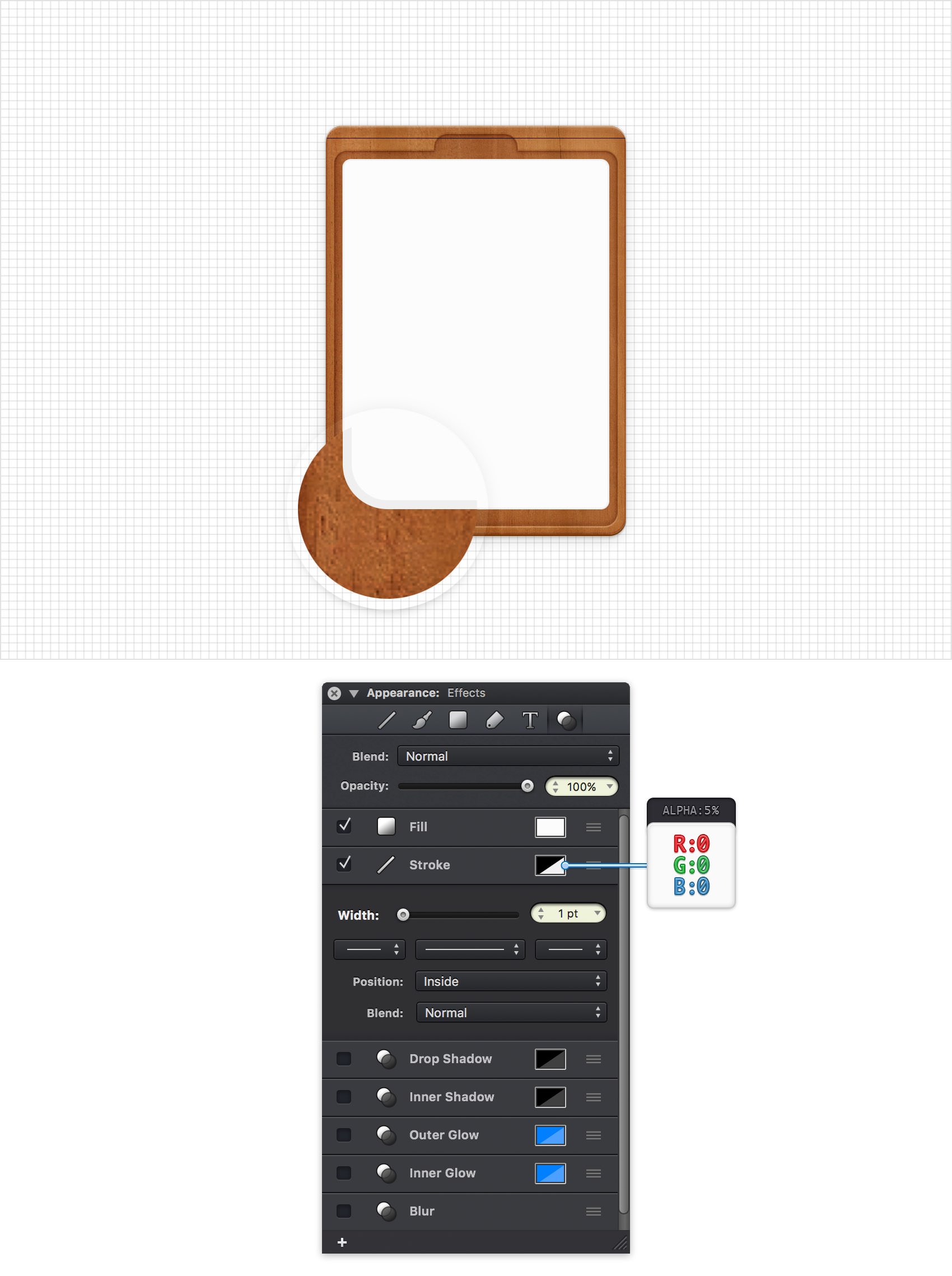
Step 25
Make sure that your white, rounded rectangle is still selected and keep focusing on the Effects pane. Activate the existing Drop Shadow and enter the attributes shown in the following image.
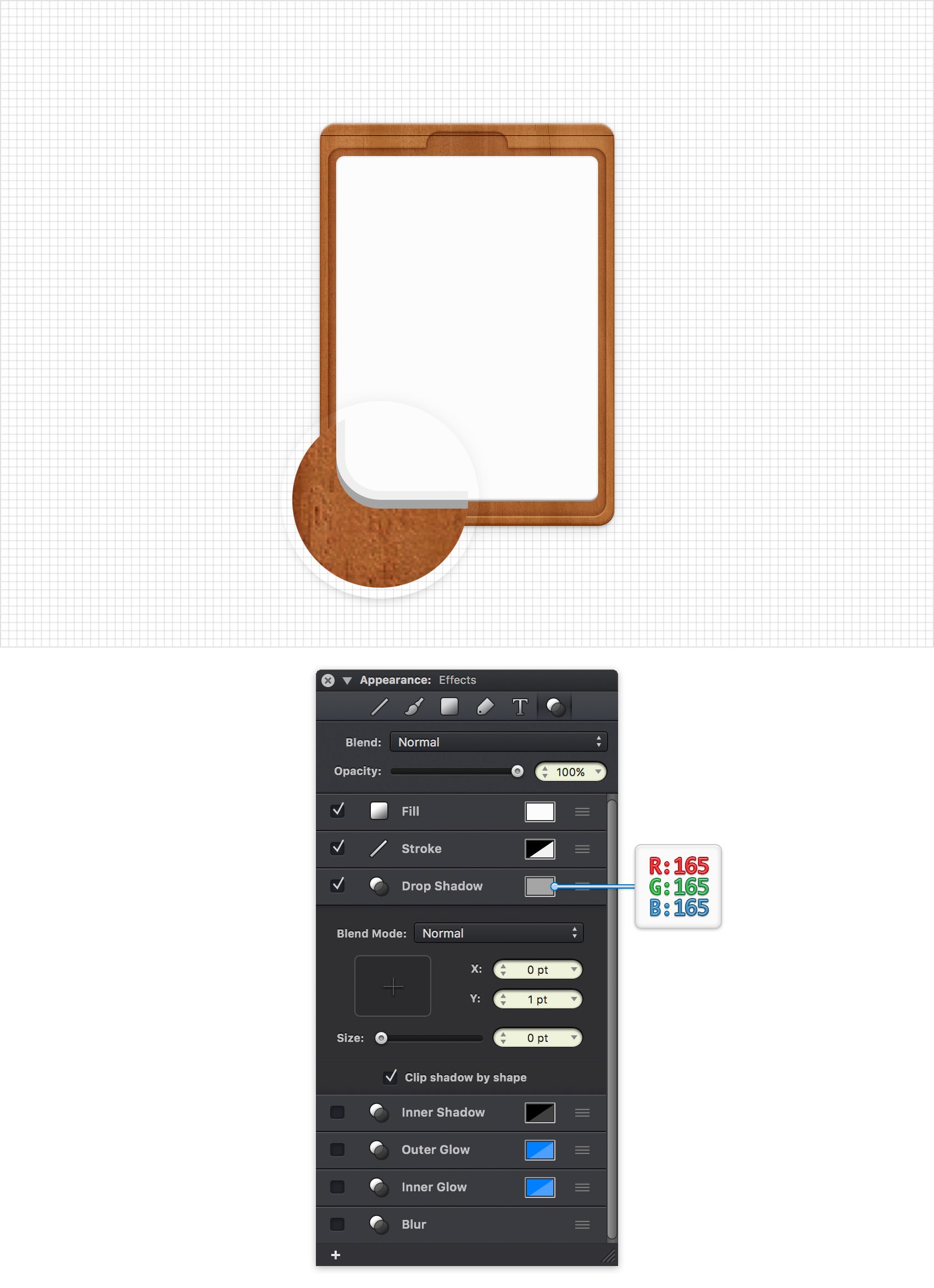
Step 26
Make sure that your white, rounded rectangle is still selected, keep focusing on the Effects pane and duplicate the existing Drop Shadow. Select the newly added effect, make sure that it lies below the other Drop Shadow and then replace the existing attributes with the ones shown in the following image.
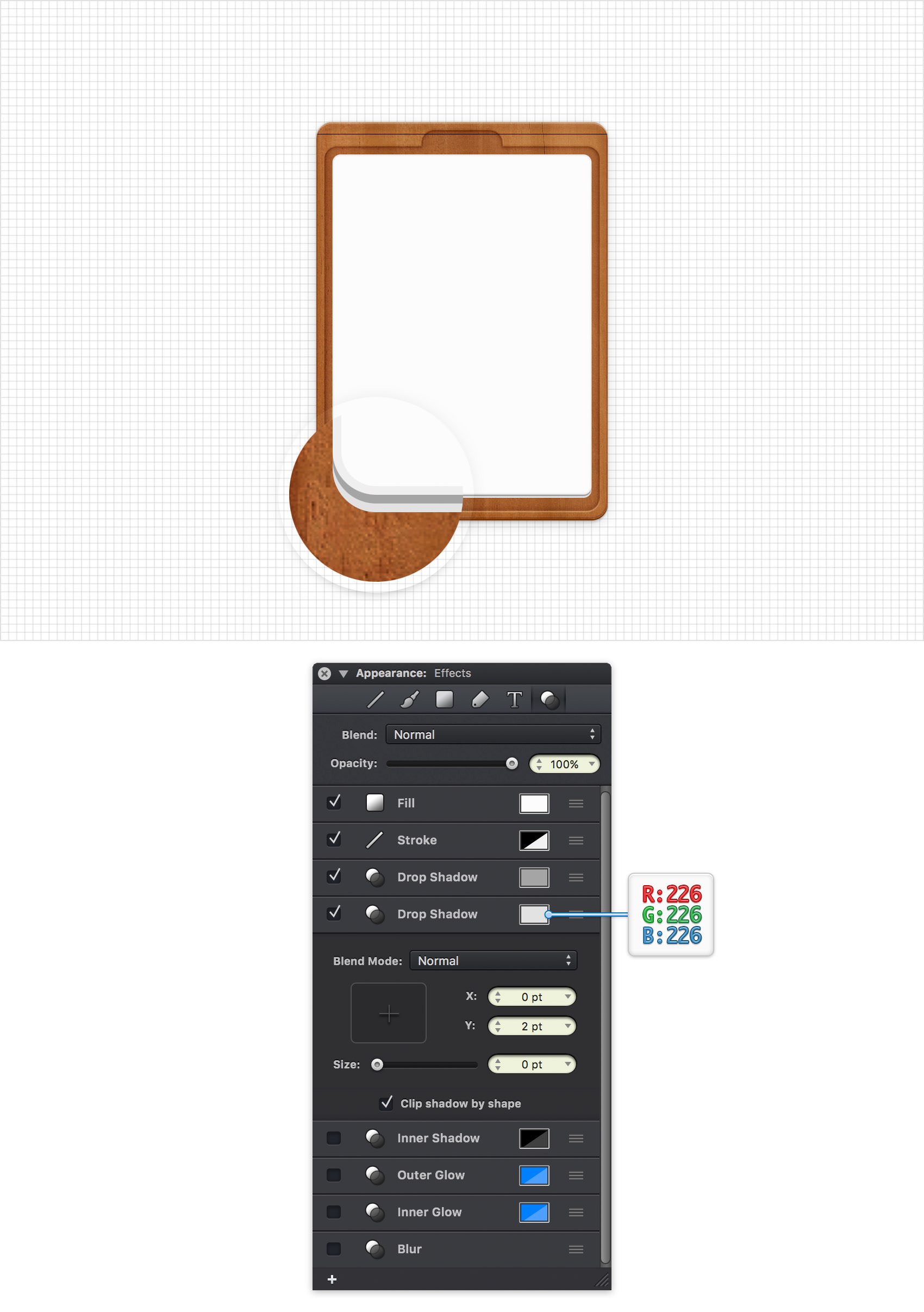
Step 27
Make sure that your white, rounded rectangle is still selected, keep focusing on the Effects pane and duplicate the bottom Drop Shadow. Select the newly added effect, make sure that it lies below the other Drop Shadows and then replace the existing attributes with the ones shown in the following image.
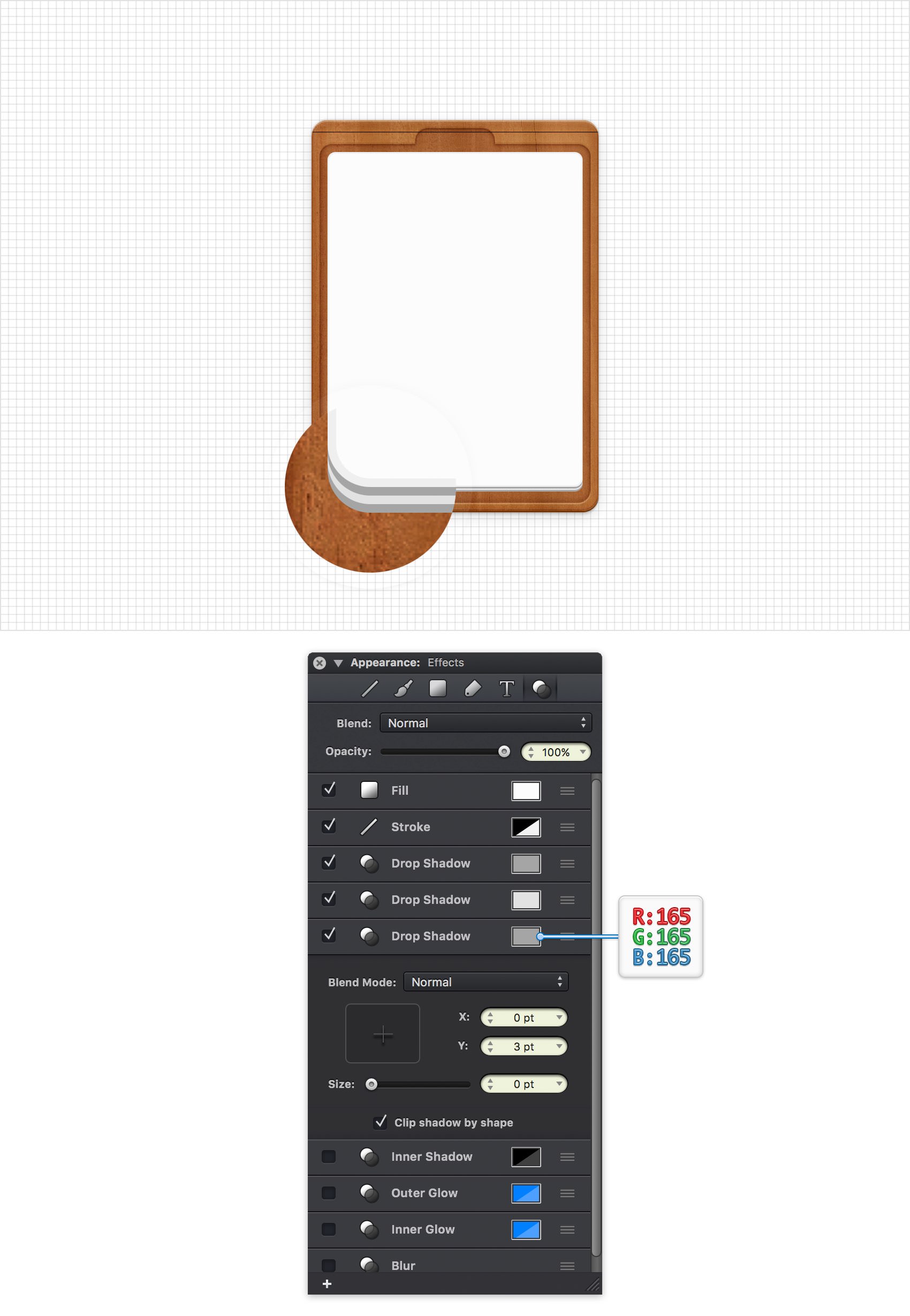
Step 28
Make sure that your white, rounded rectangle is still selected, keep focusing on the Effects pane and duplicate the bottom Drop Shadow. Select the newly added effect, make sure that it lies below the other Drop Shadows and then replace the existing attributes with the ones shown in the following image.
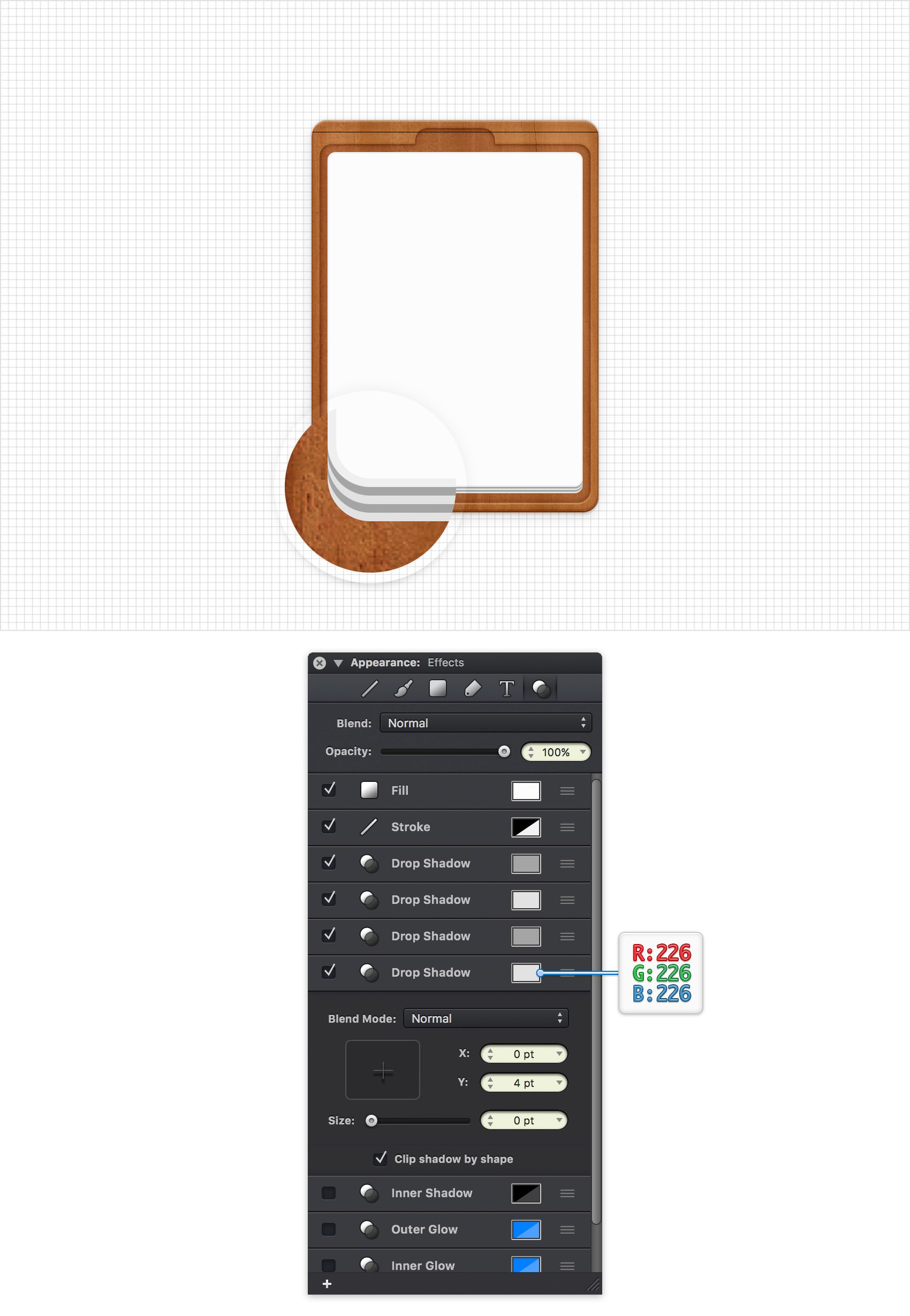
Step 29
Make sure that your white, rounded rectangle stays selected, keep focusing on the Effects pane and duplicate the bottom Drop Shadow. Select the newly added effect, make sure that it lies below the other Drop Shadows and then replace the existing attributes with the ones shown in the following image.
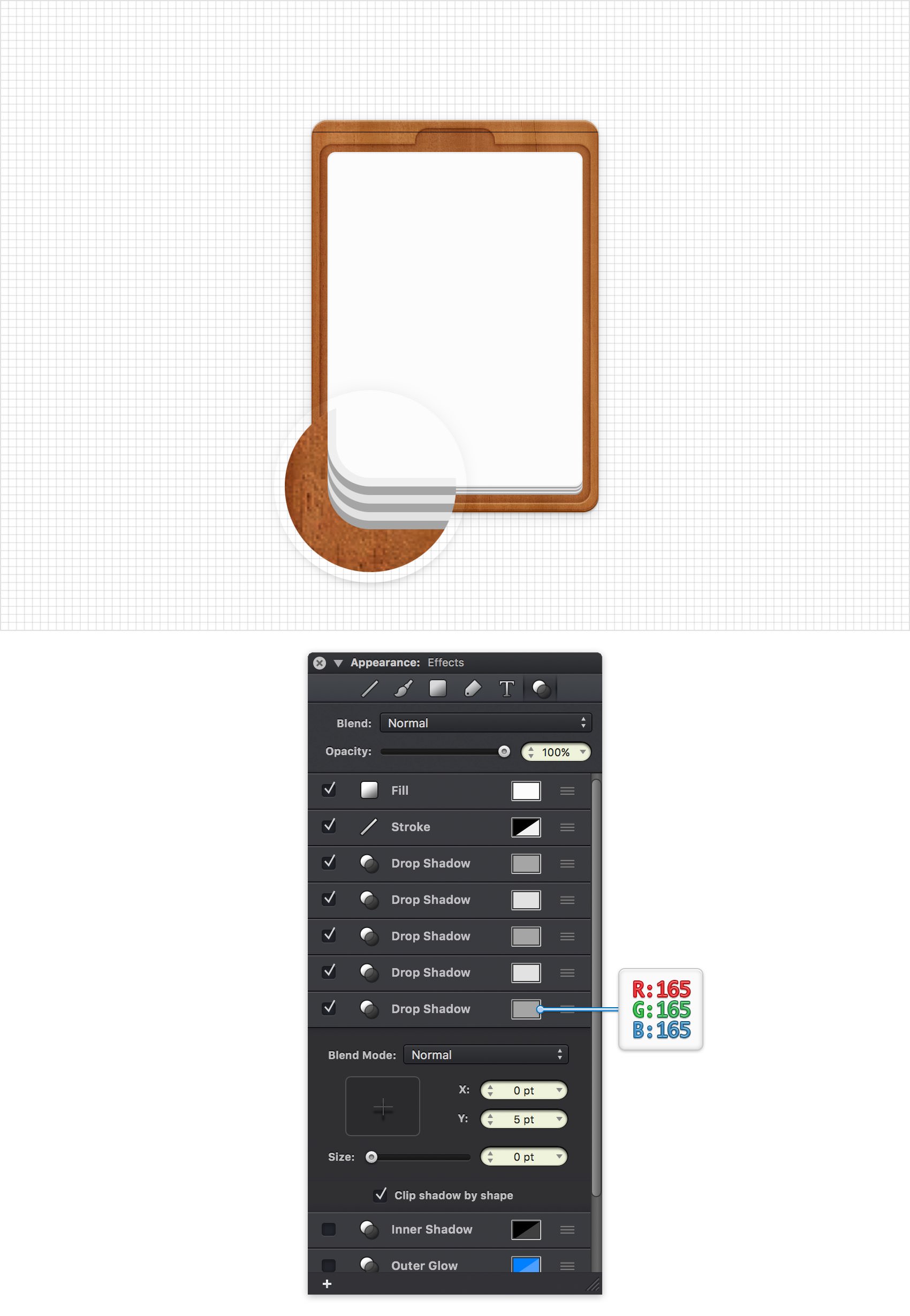
Step 30
Make sure that your white, rounded rectangle stays selected, keep focusing on the Effects pane and duplicate the bottom Drop Shadow. Select the newly added effect, make sure that it lies below the other Drop Shadows and then replace the existing attributes with the ones shown in the following image.
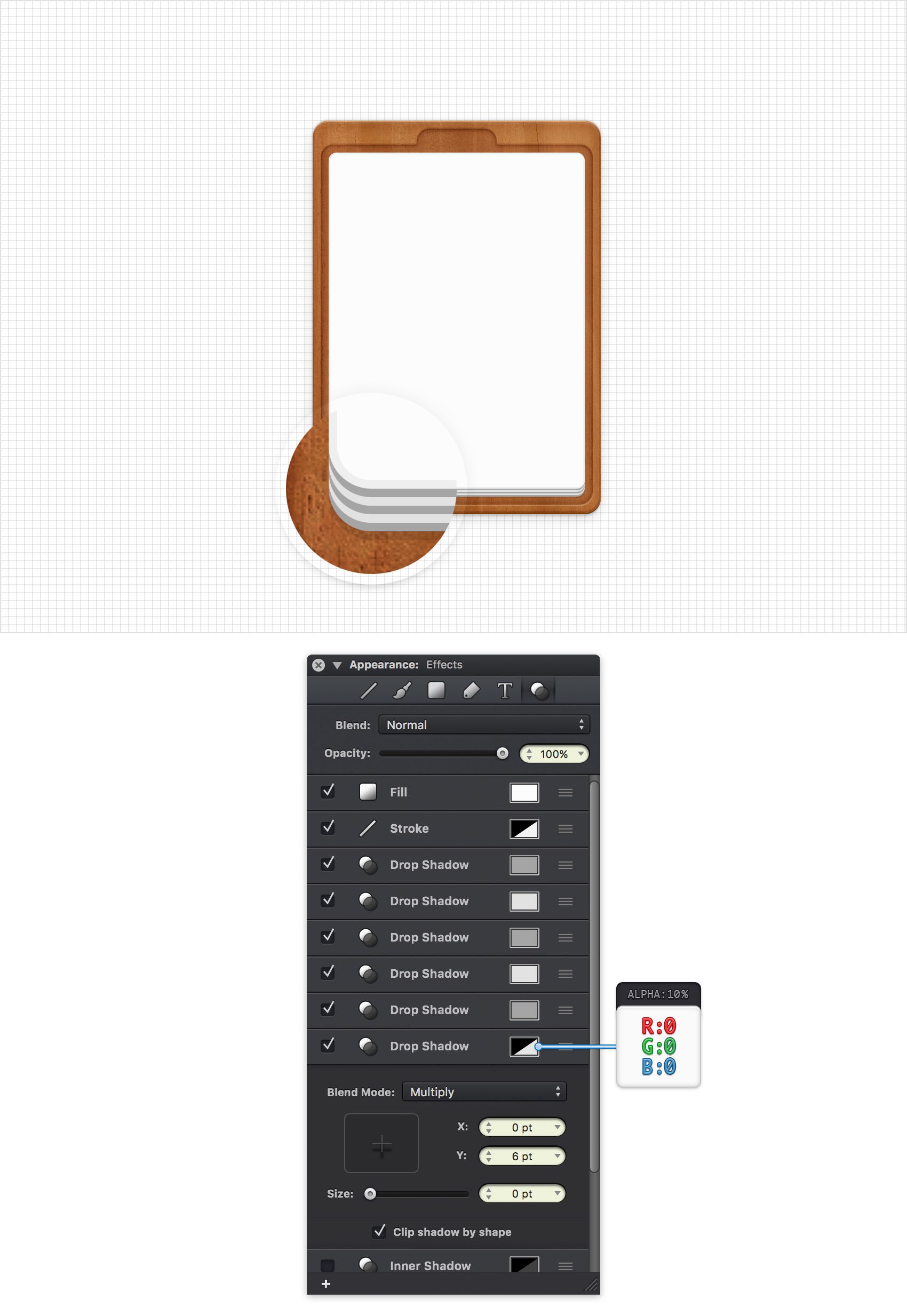
Step 31
Make sure that your white, rounded rectangle stays selected, keep focusing on the Effects pane and duplicate the bottom Drop Shadow. Select the newly added effect, make sure that it lies below the other Drop Shadows and then replace the existing attributes with the ones shown in the following image.
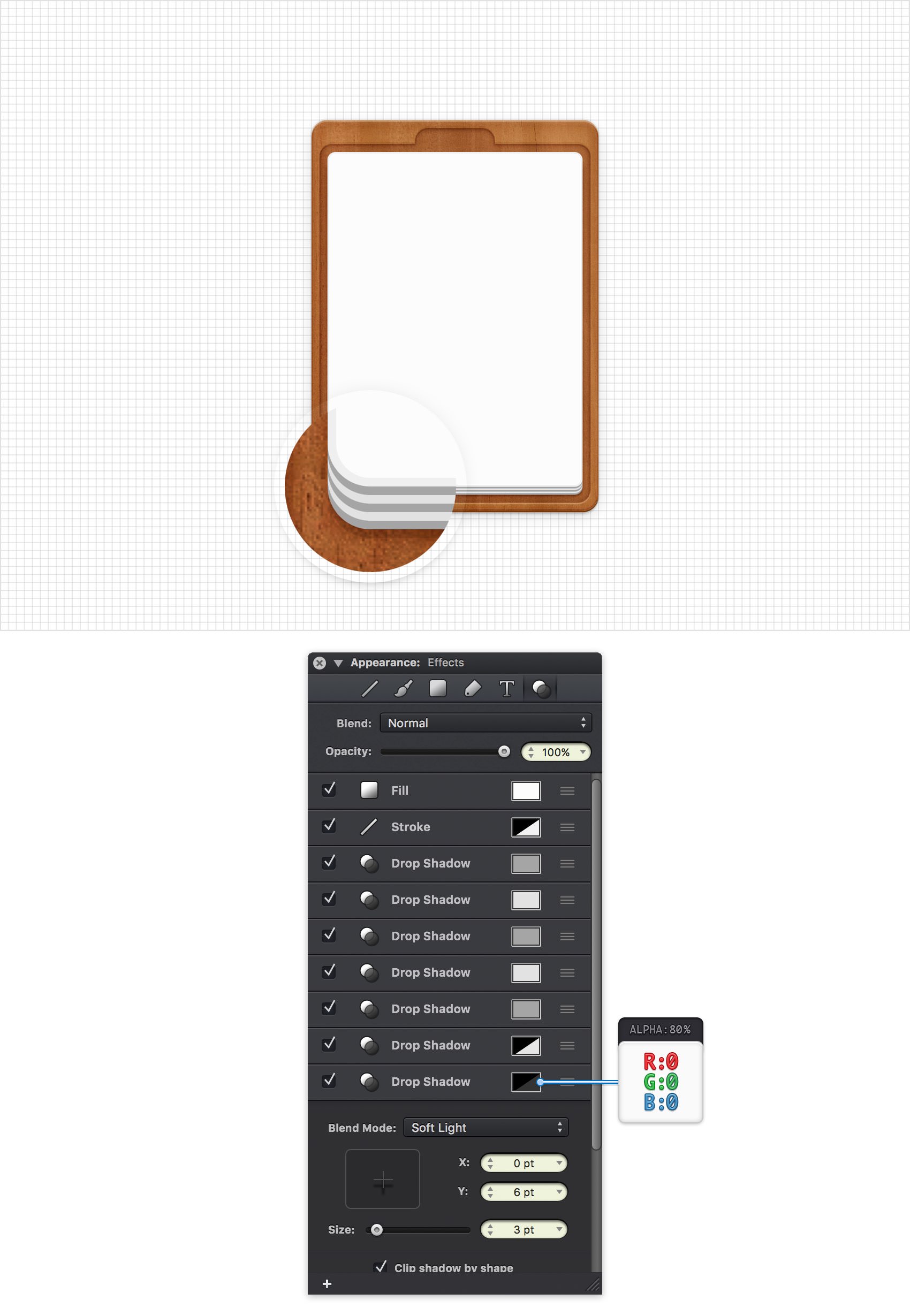
Step 32
Get back to your Toolbar. This time make sure that the Fill is invisible and then set the Stroke color to R=87 G=88 B=92.
Pick the Rounded Rectangle Tool (Shift + M) and drag that Corner Radius slider to 5 pt. Move to your canvas, create a 70 x 20 px shape and place it exactly as shown in the following image. Make sure that this new shape stays selected and move to the Effects pane. Select the existing Stroke and drag that Width slider to 2 pt.

Step 33
Make sure that the rounded rectangle made in the previous step is still selected, focus on the Effects pane and add a second Stroke. Drag it below the existing Stroke and enter the attributes shown in the following image.
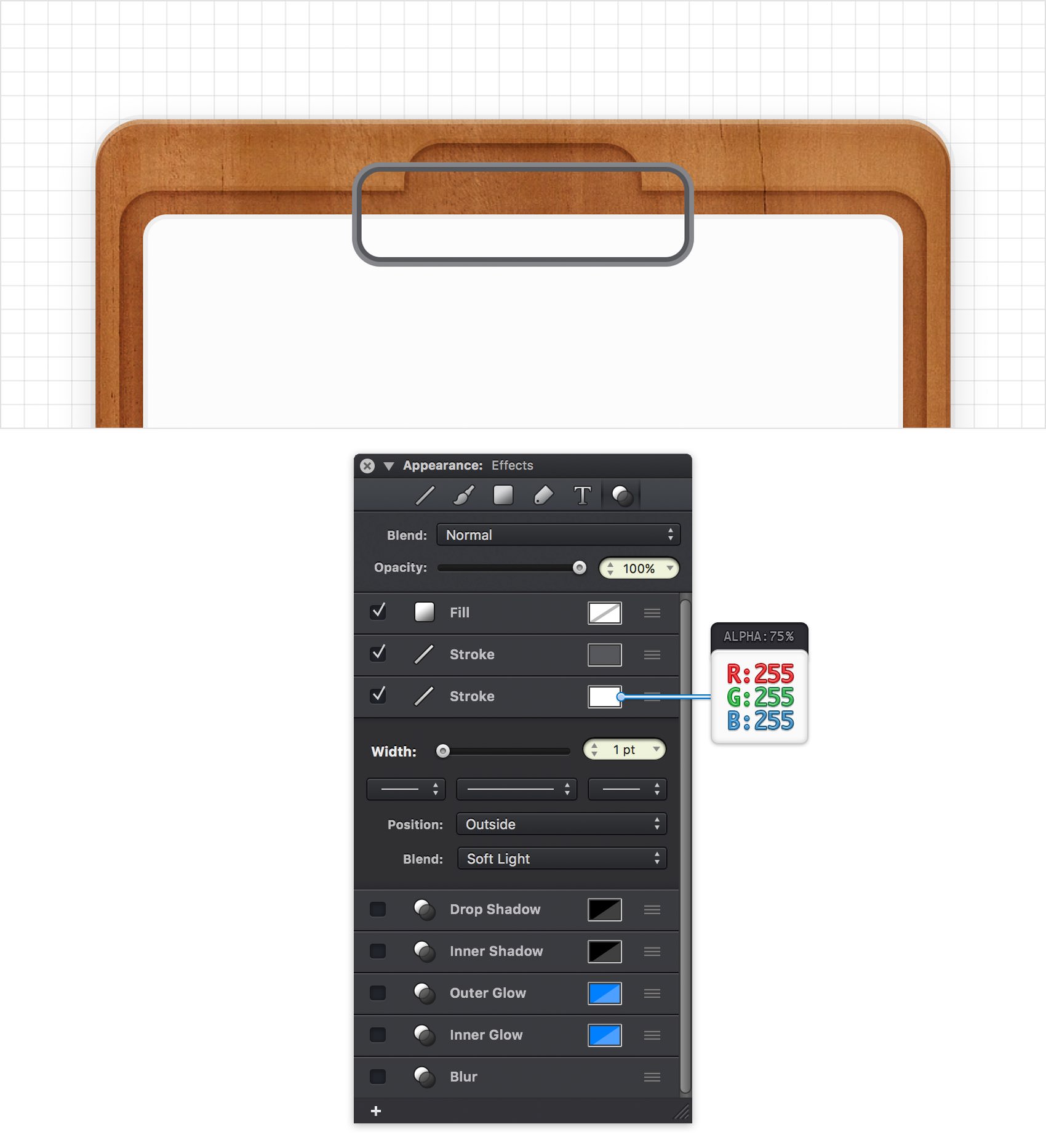
Step 34
Make sure that the rounded rectangle edited in the previous step is still selected, focus on the Effects pane, activate the existing Drop Shadow and enter the attributes shown in the following image.
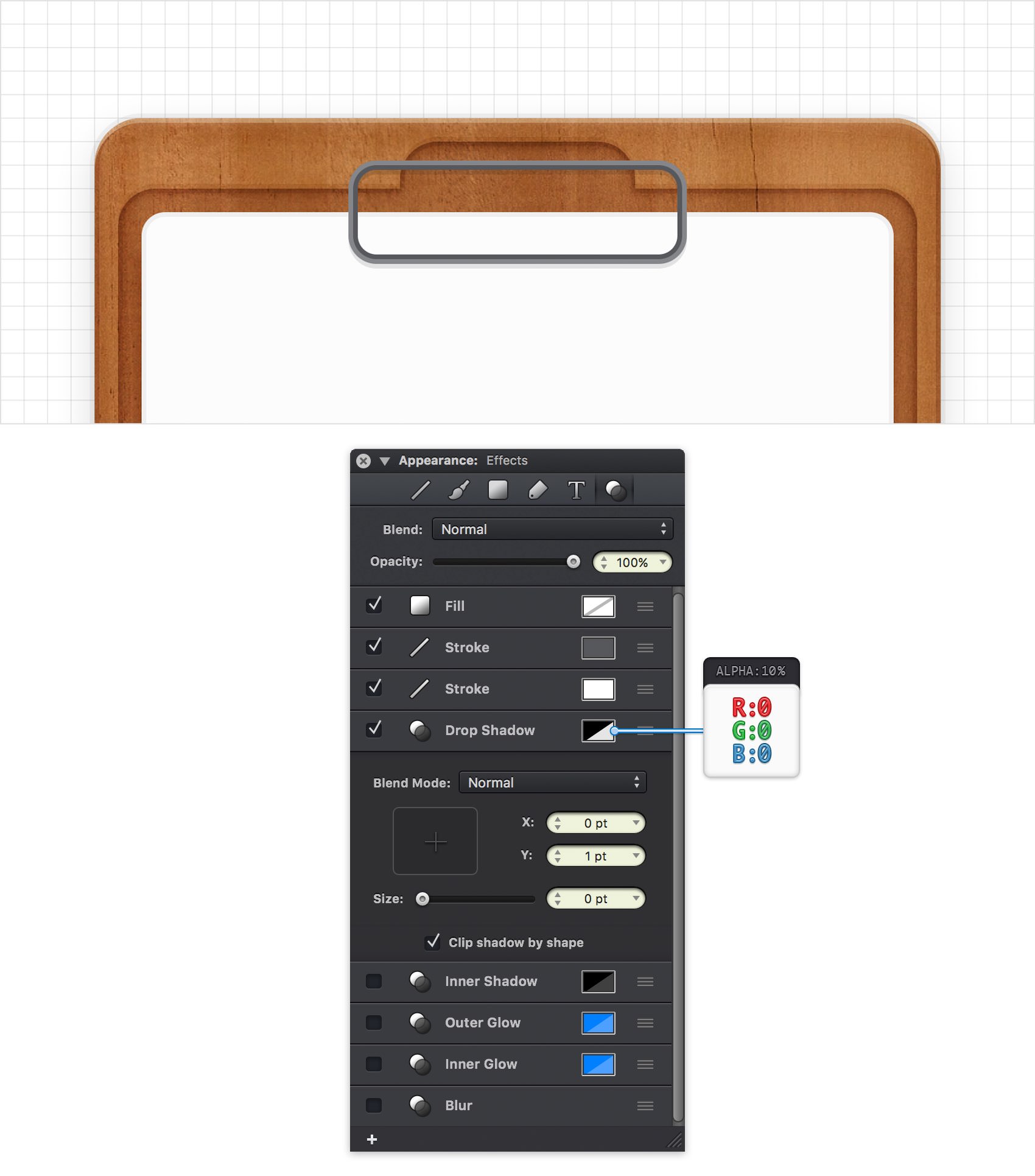
Step 35
Make sure that the rounded rectangle edited in the previous step is still selected, focus on the Effects pane, activate the existing Inner Shadow and enter the attributes shown in the following image.
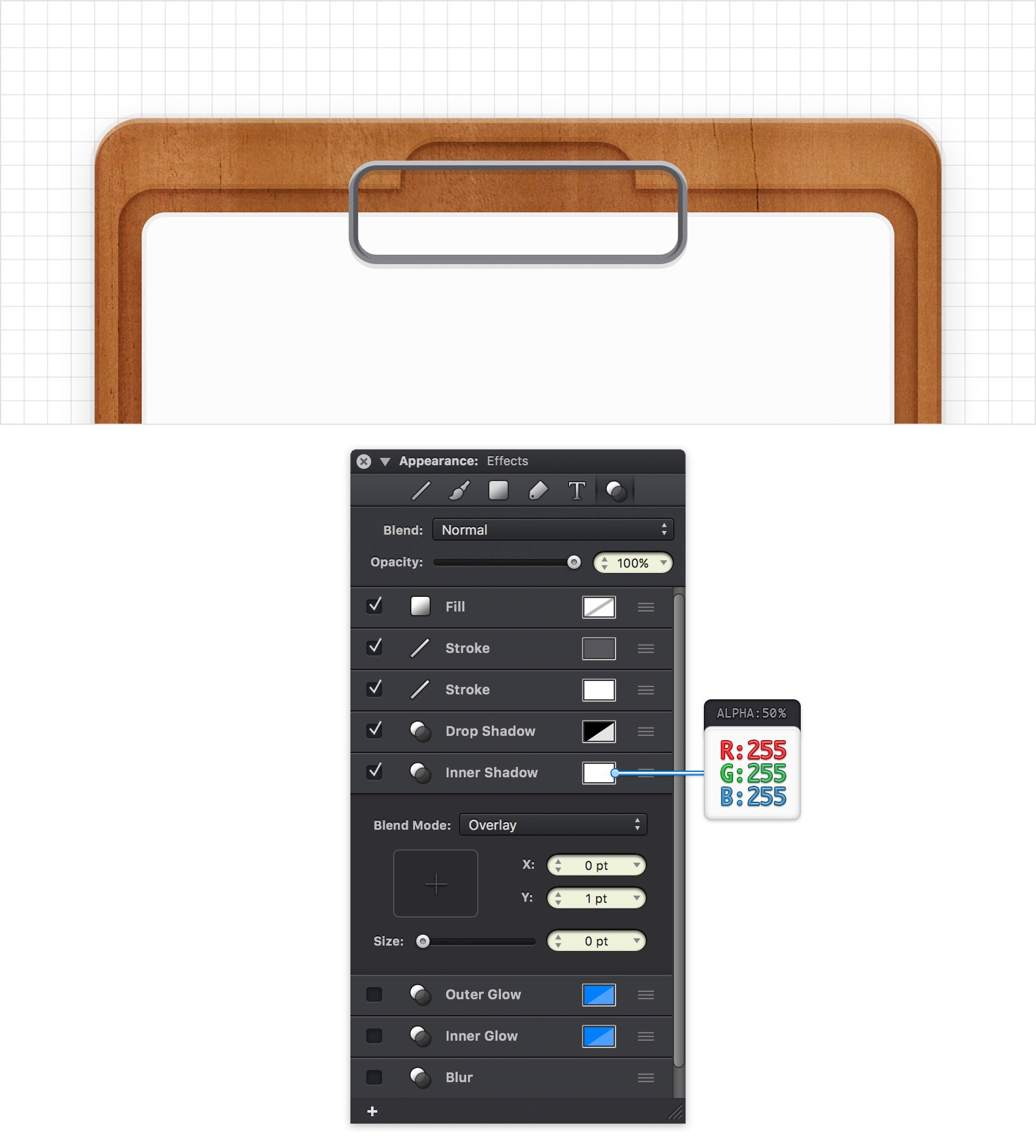
Step 36
Make sure that the rounded rectangle edited in the previous step is still selected, focus on the Effects pane and add a second Inner Shadow. Select this new effect, make sure that it lies below the existing Inner Shadow and then enter the attributes shown in the following image.
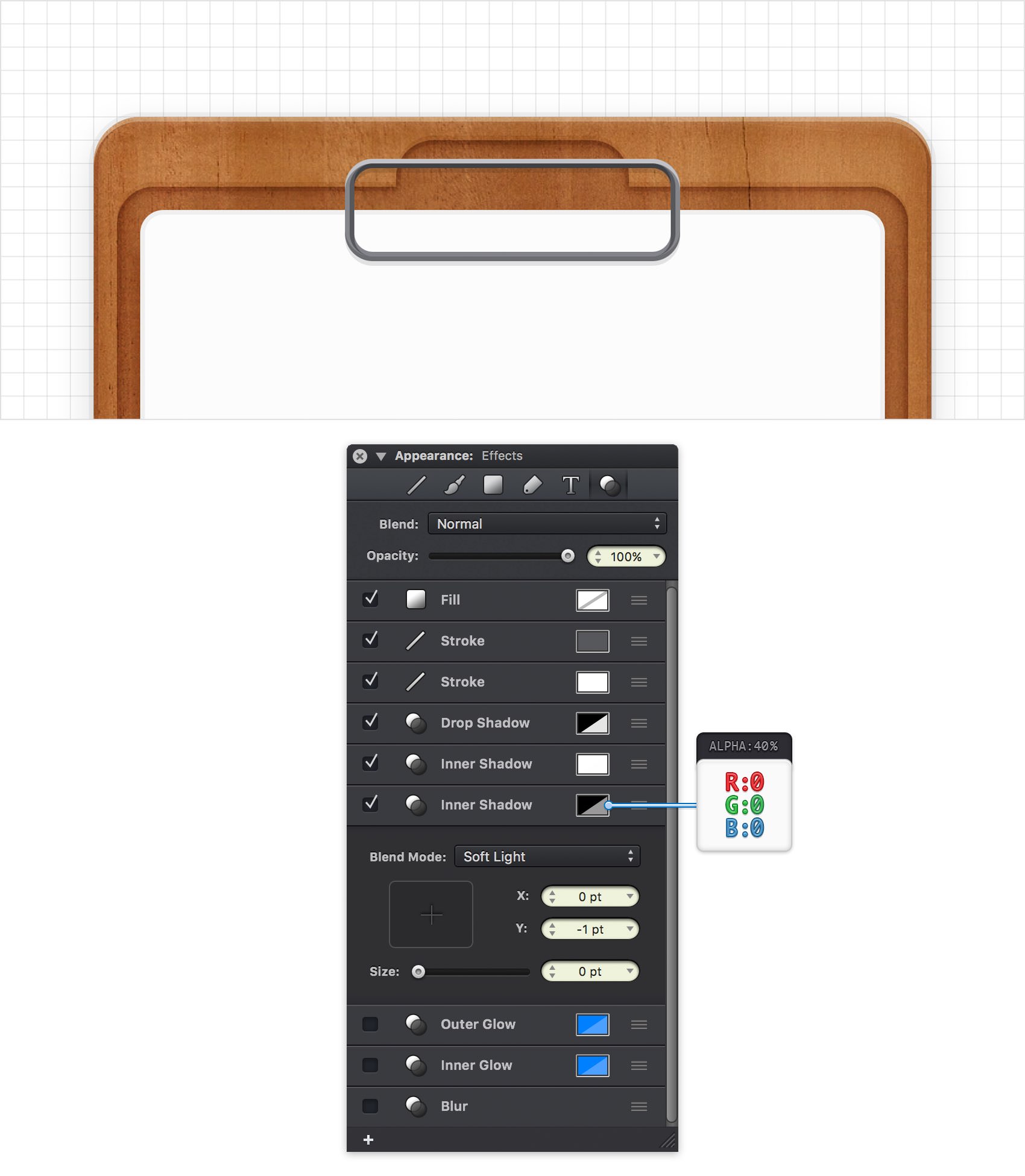
Step 37
Pick the Rounded Rectangle Tool (Shift + M), focus on the Tool Options bar and make sure that the Corner Radius slider is set to 5 pt. Move to your canvas, create a 40 x 10 px shape and place it as shown in the following image.
Make sure that this new shape stays selected and move to the Effects pane. Focus on the existing Fill, select Linear Gradient from the Type drop-down menu, set the Angle to 90 degrees and then move to the gradient sliders. Select the left slider, set its color to R=87 G=88 B=92 and then select the right slider and set its color to R=187 G=188 B=192. Simply click on the gradient bar and you will get a new gradient slider. Select it, set the color to R=168 G=169 B=171 and then drag it to the left until the Location tooltip shows 30%. Add another two gradient sliders and use the color and Location attributes shown in the following image.
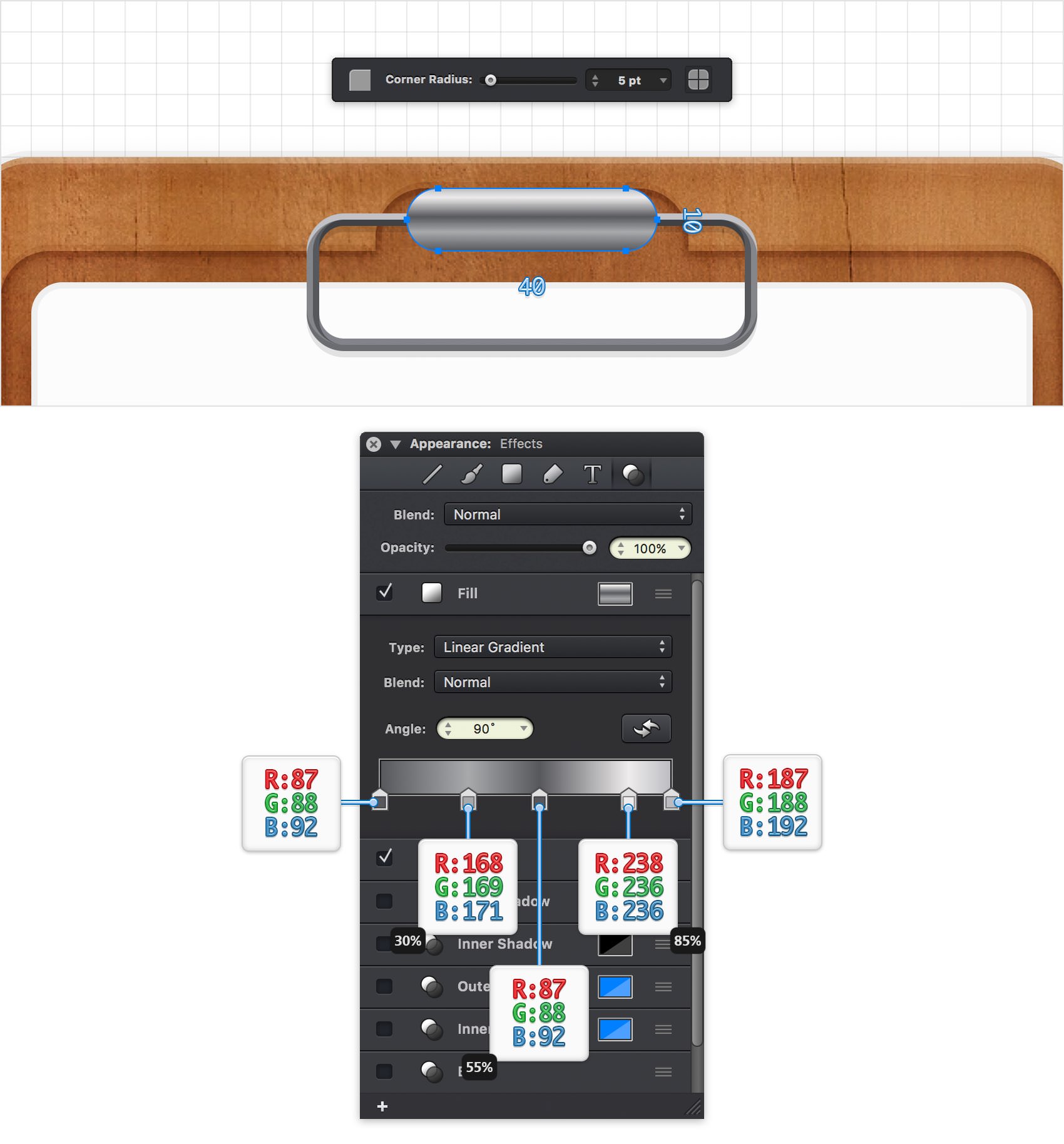
Step 38
Make sure that your newest rounded rectangle is still selected, focus on the Effects pane, select the existing Stroke and enter the attributes shown in the following image.
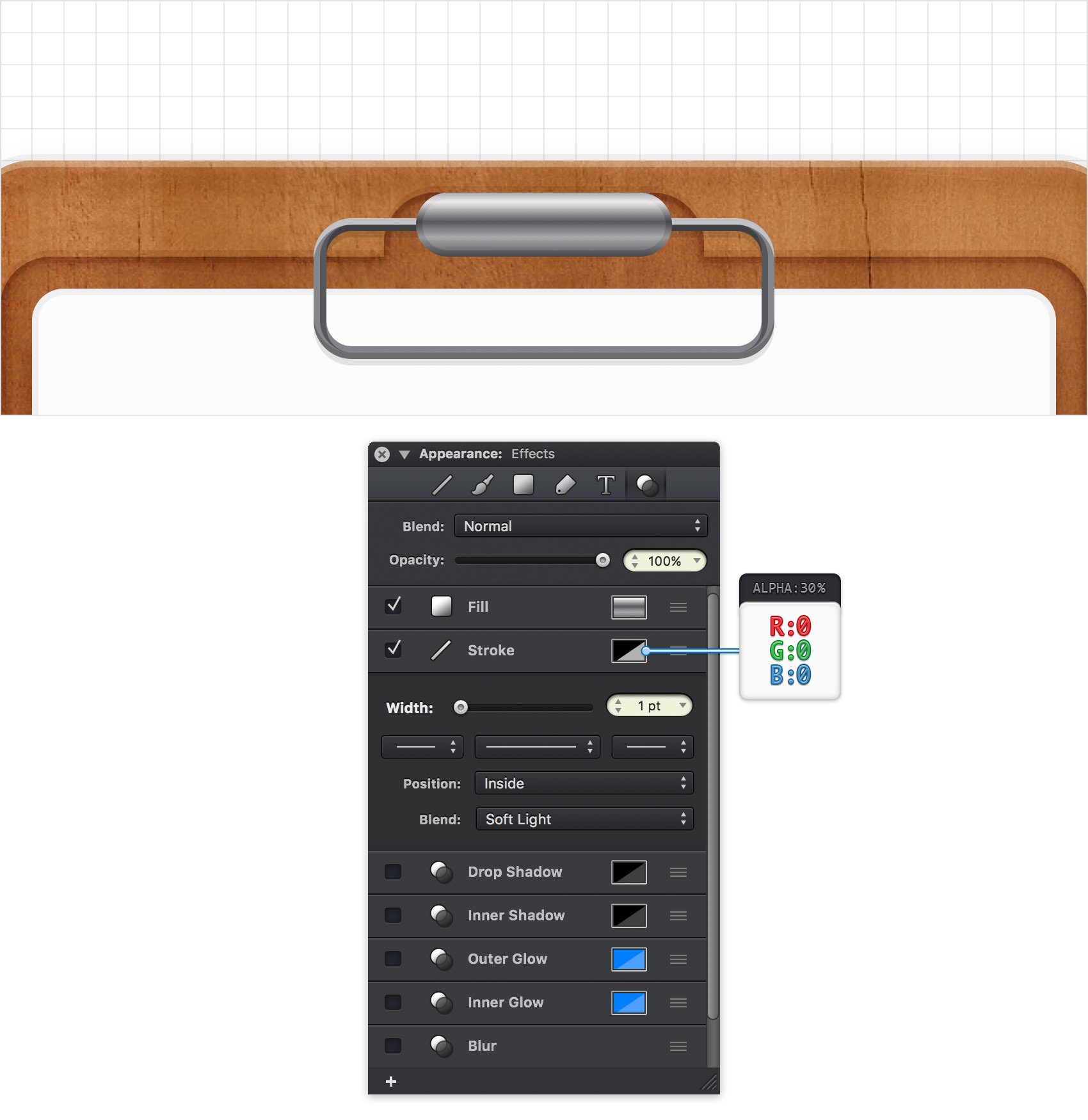
Step 39
Make sure that your newest rounded rectangle is still selected, keep focusing on the Effects pane and add a second Stroke. Make sure that it lies below the existing Stroke and then enter the attributes shown in the following image.

Step 40
Make sure that your newest rounded rectangle stays selected and keep focusing on the Effects pane. Activate the existing Drop Shadow, drag it below the Fill and then enter the attributes shown in the following image.
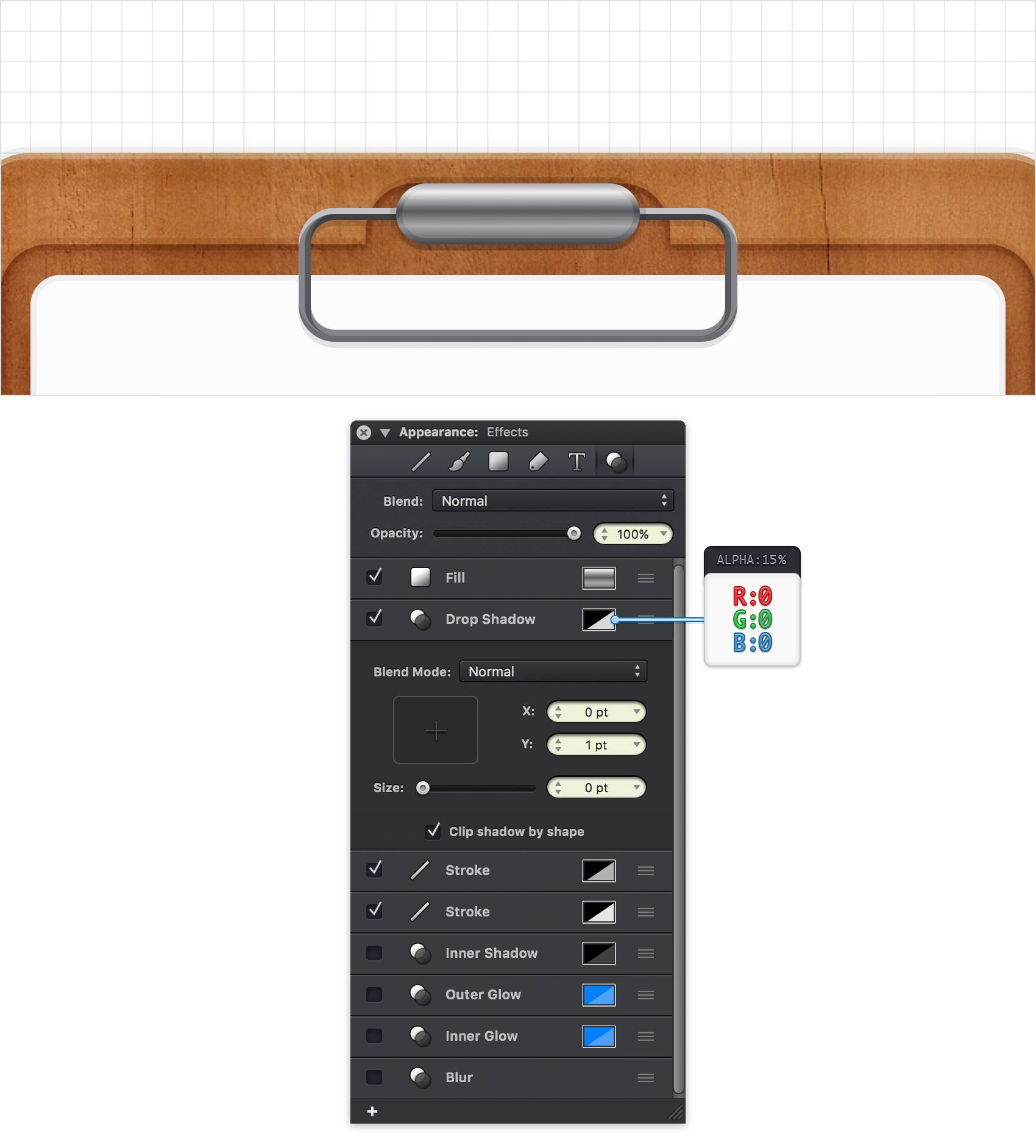
Step 41
Make sure that your newest rounded rectangle stays selected, keep focusing on the Effects pane and add a second Drop Shadow. Select this new effect, make sure that it lies below the existing Drop Shadow and then enter the attributes shown in the following image.
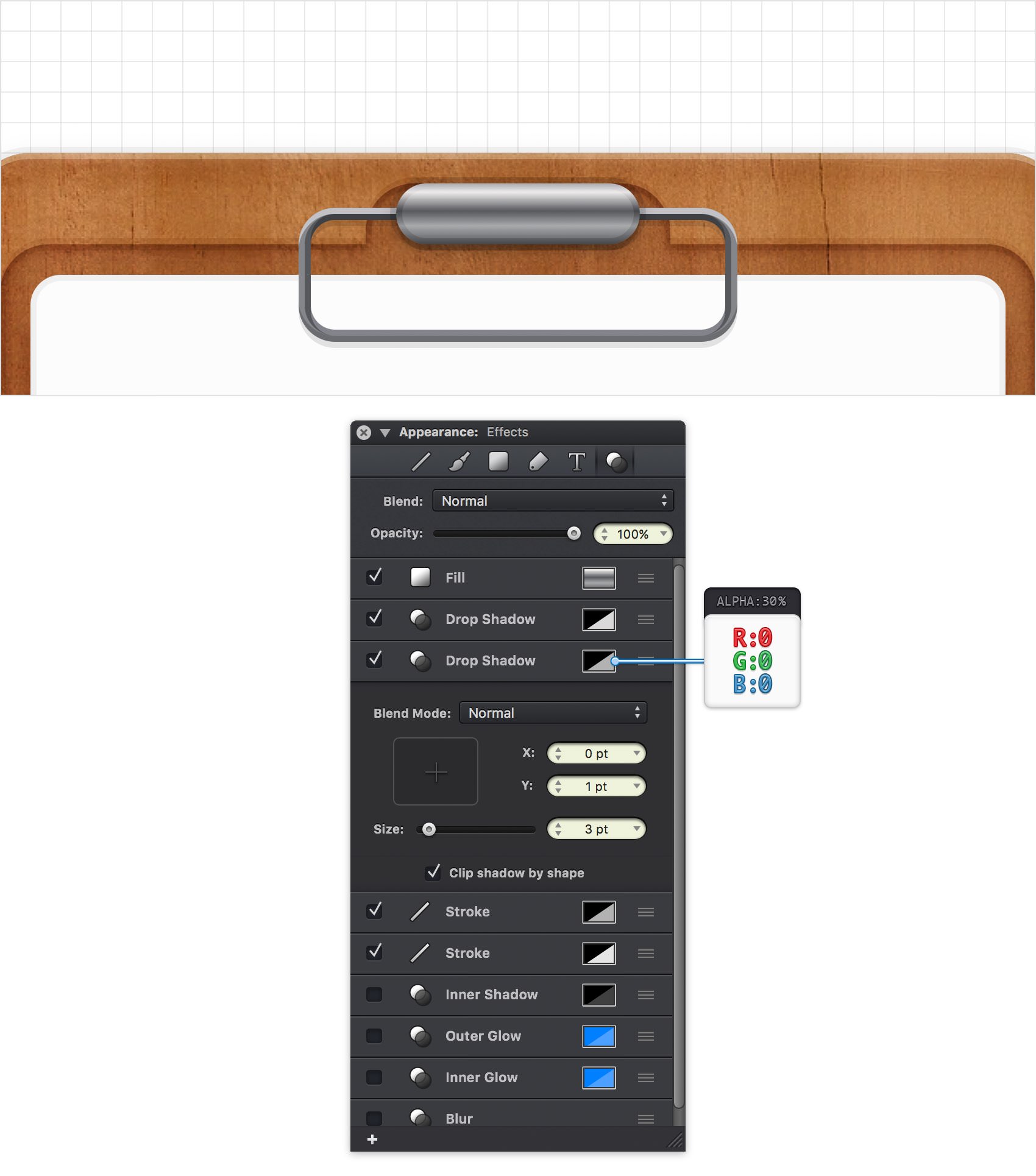
Finished Design
Congratulations, you've finished the tutorial!
Hope you've enjoyed learning some of the techniques and processes presented in these steps. As always, feel free to adjust the final design and make it your own.
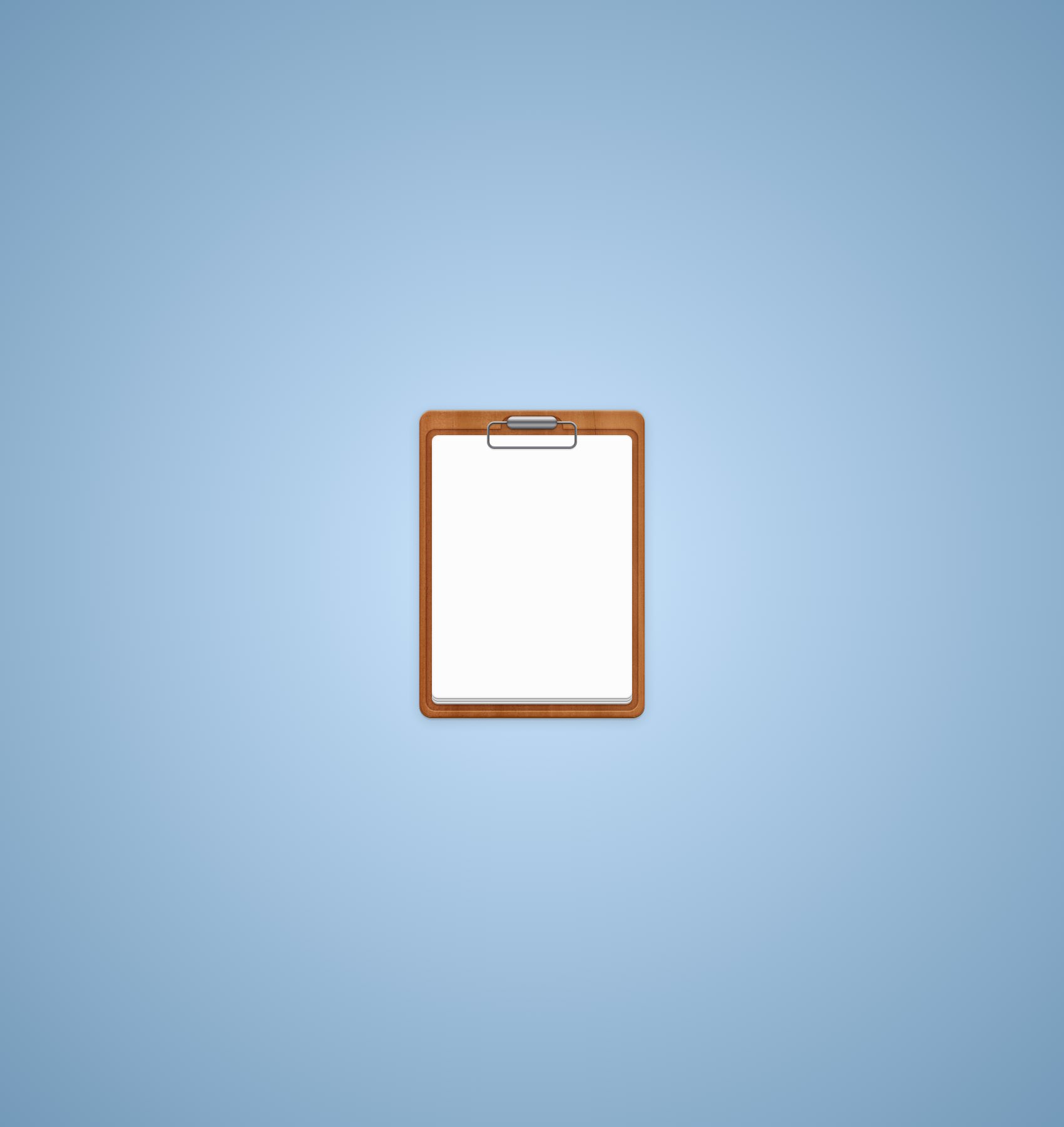
Download Graphic File:
clipboardicon.idraw 


